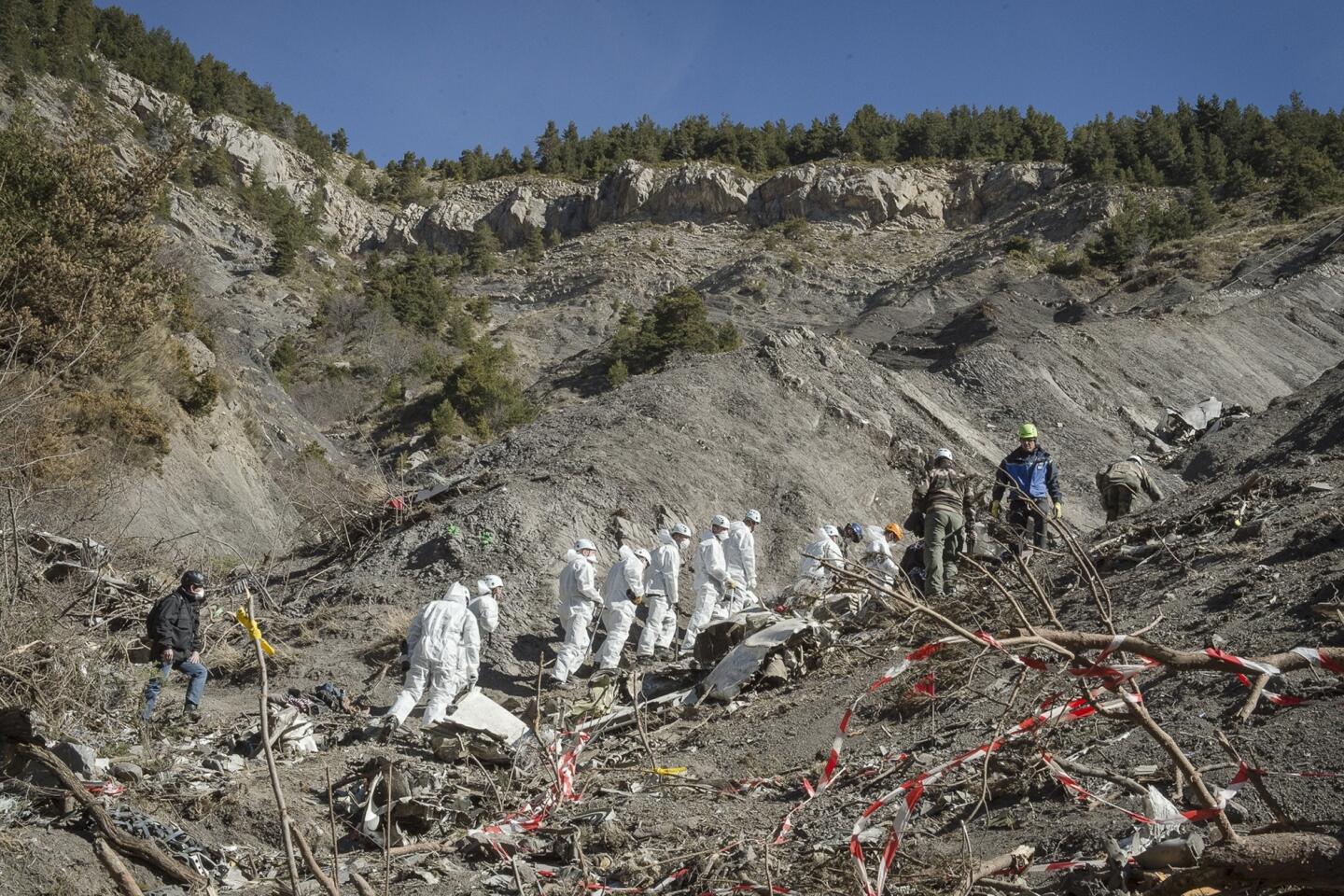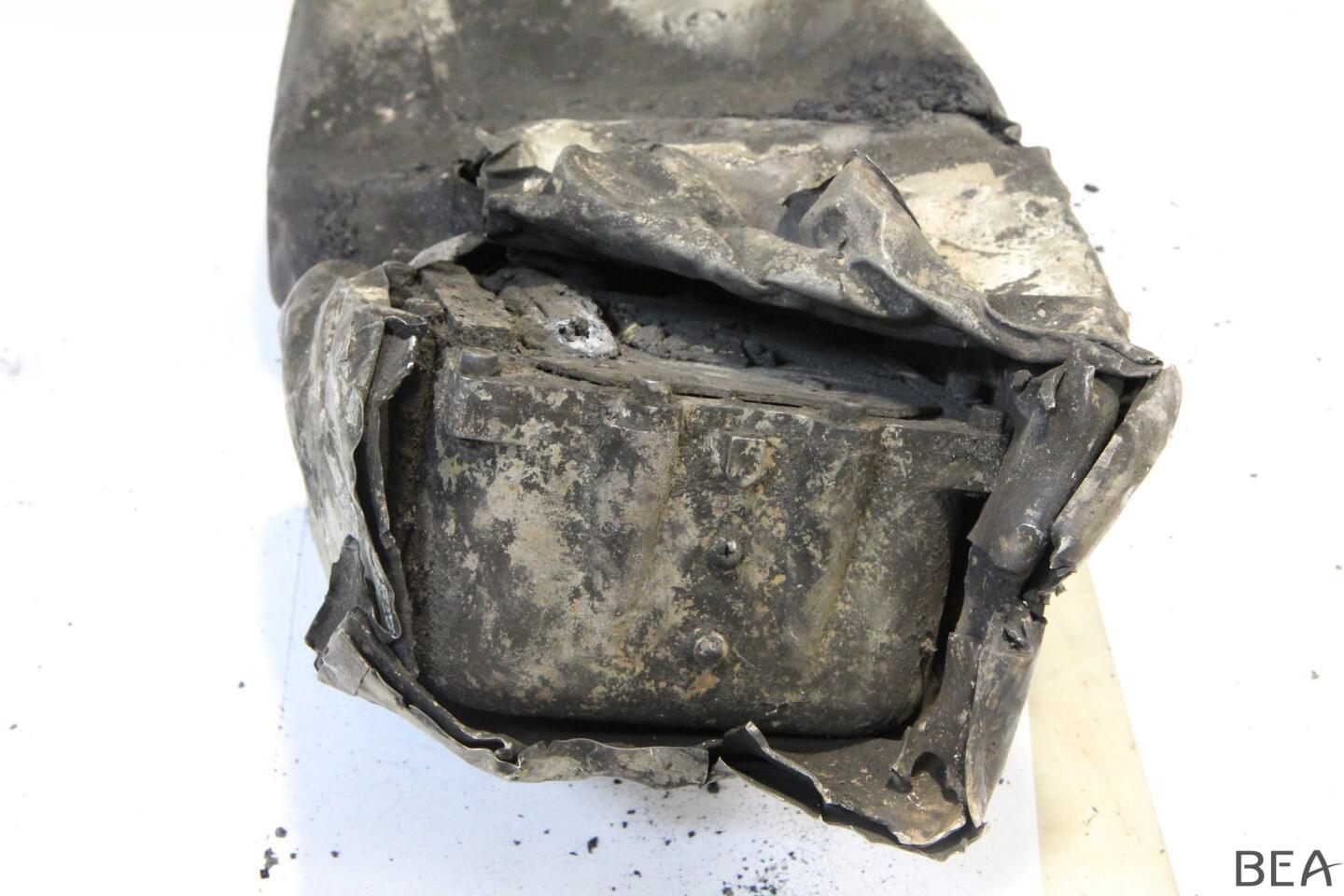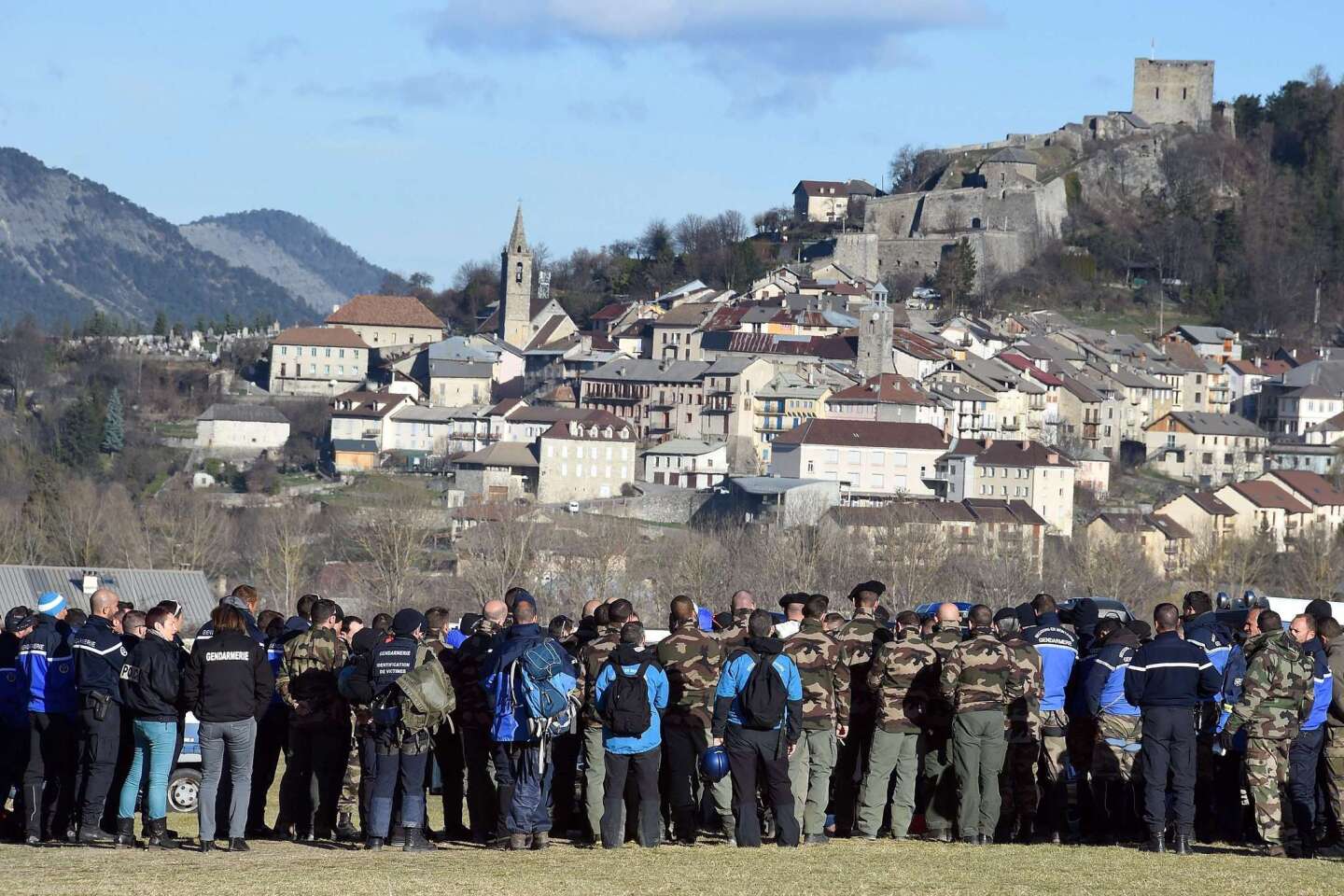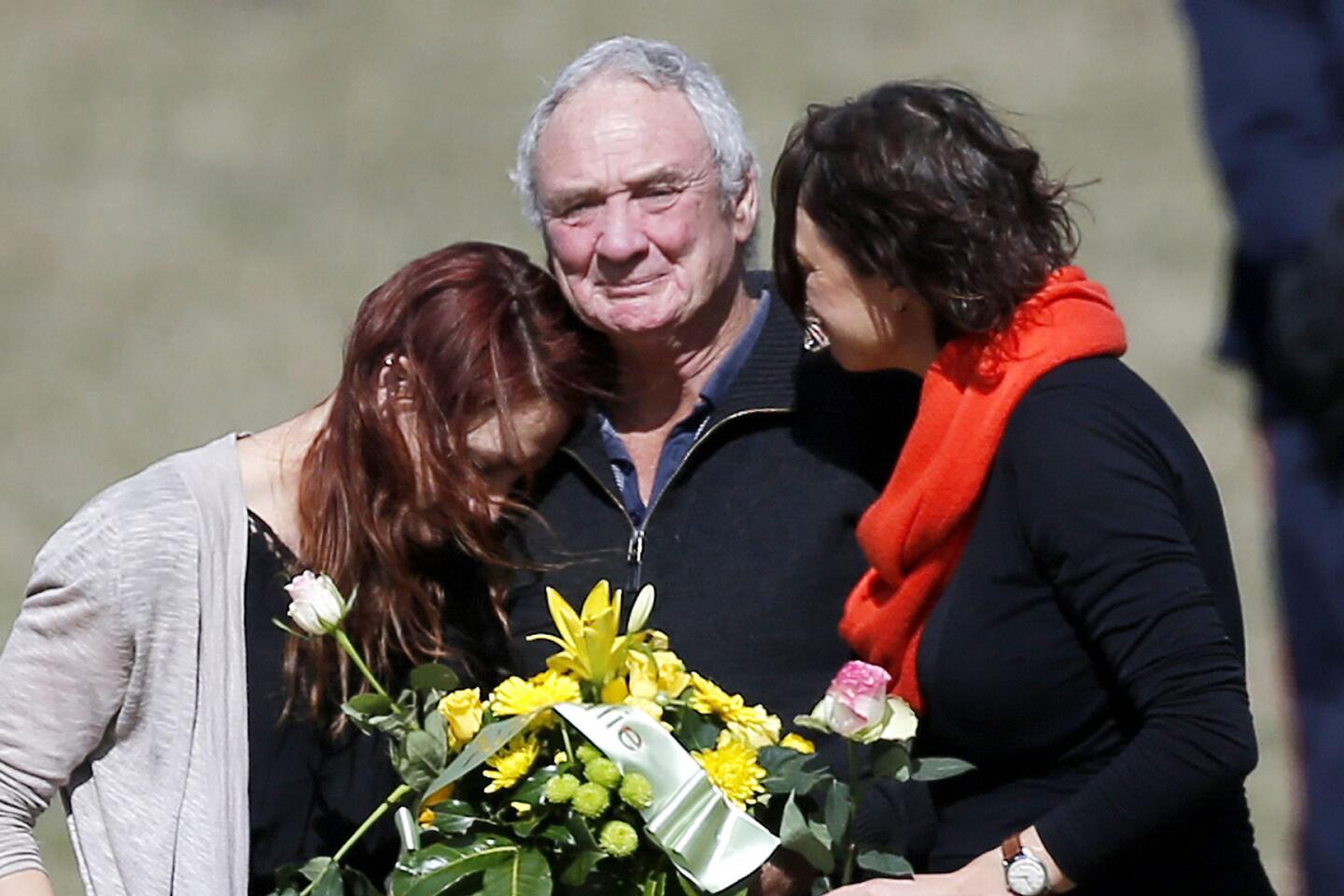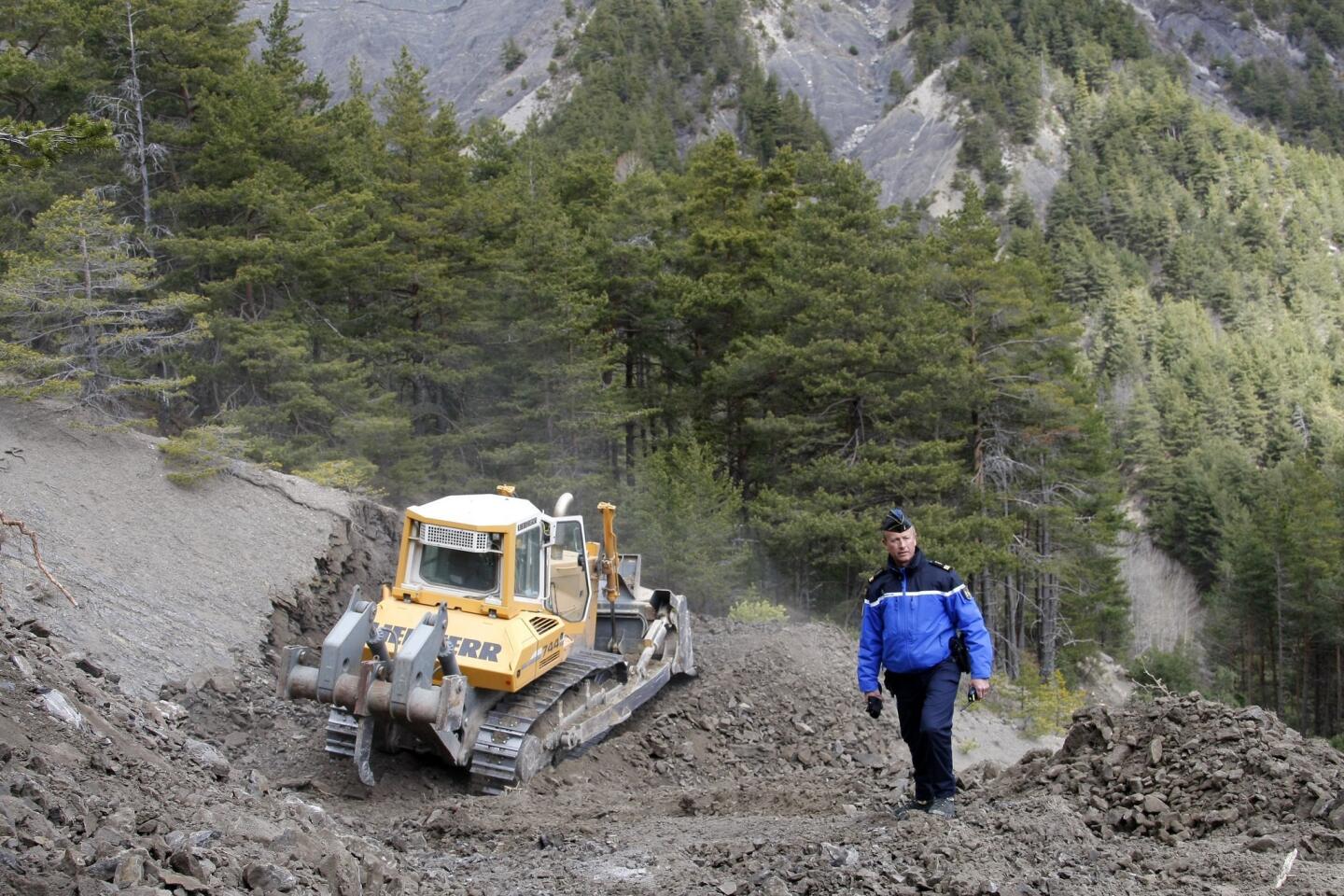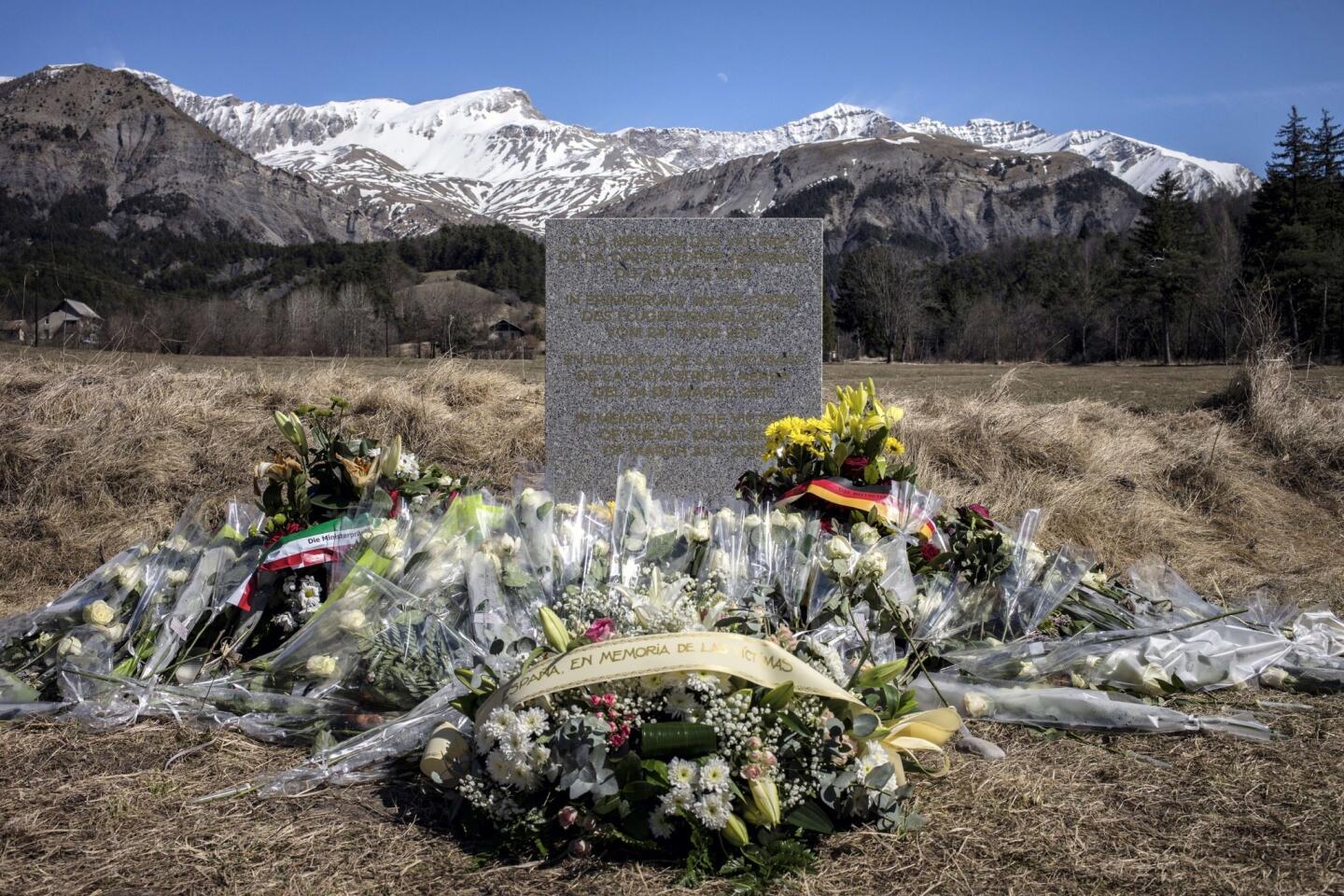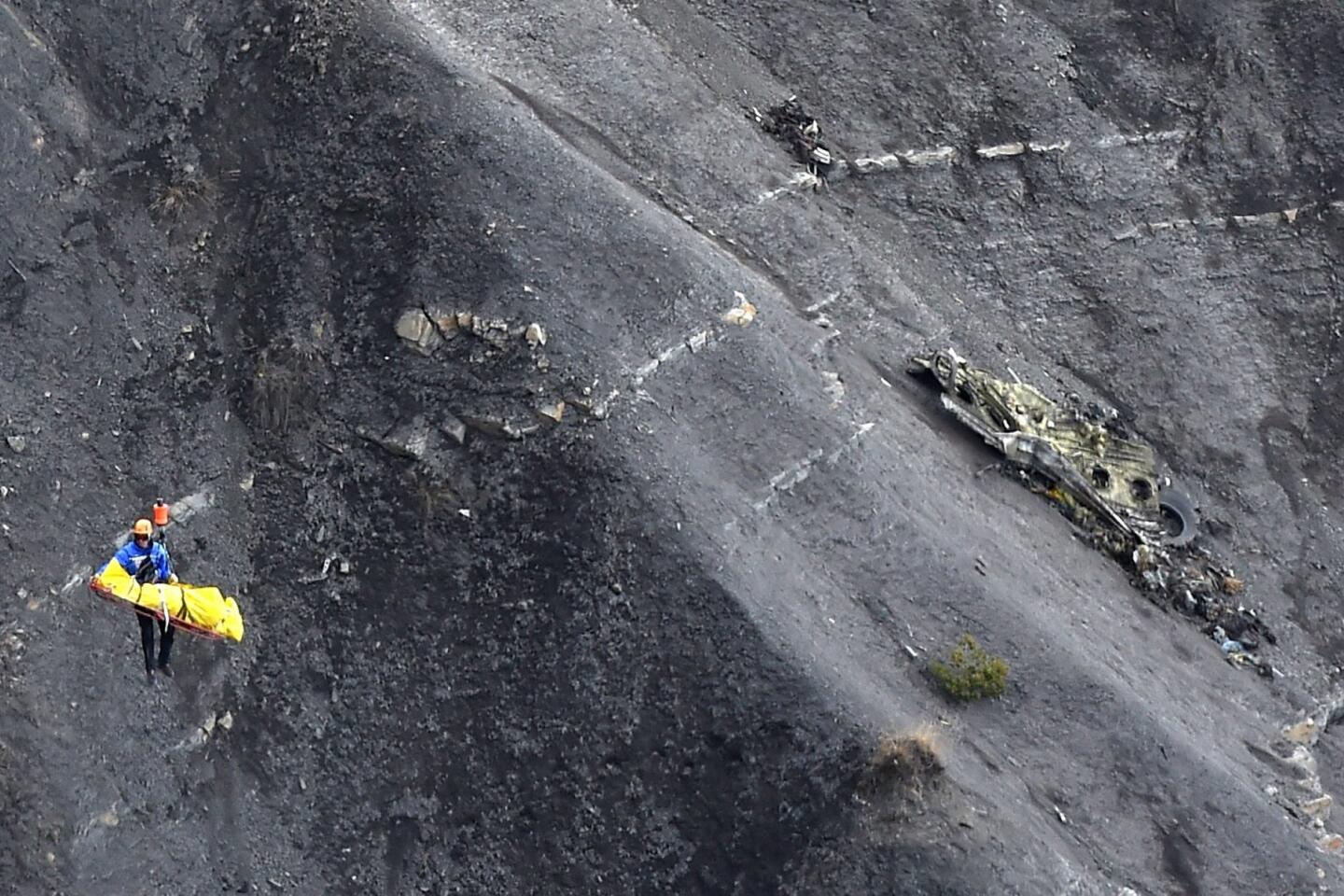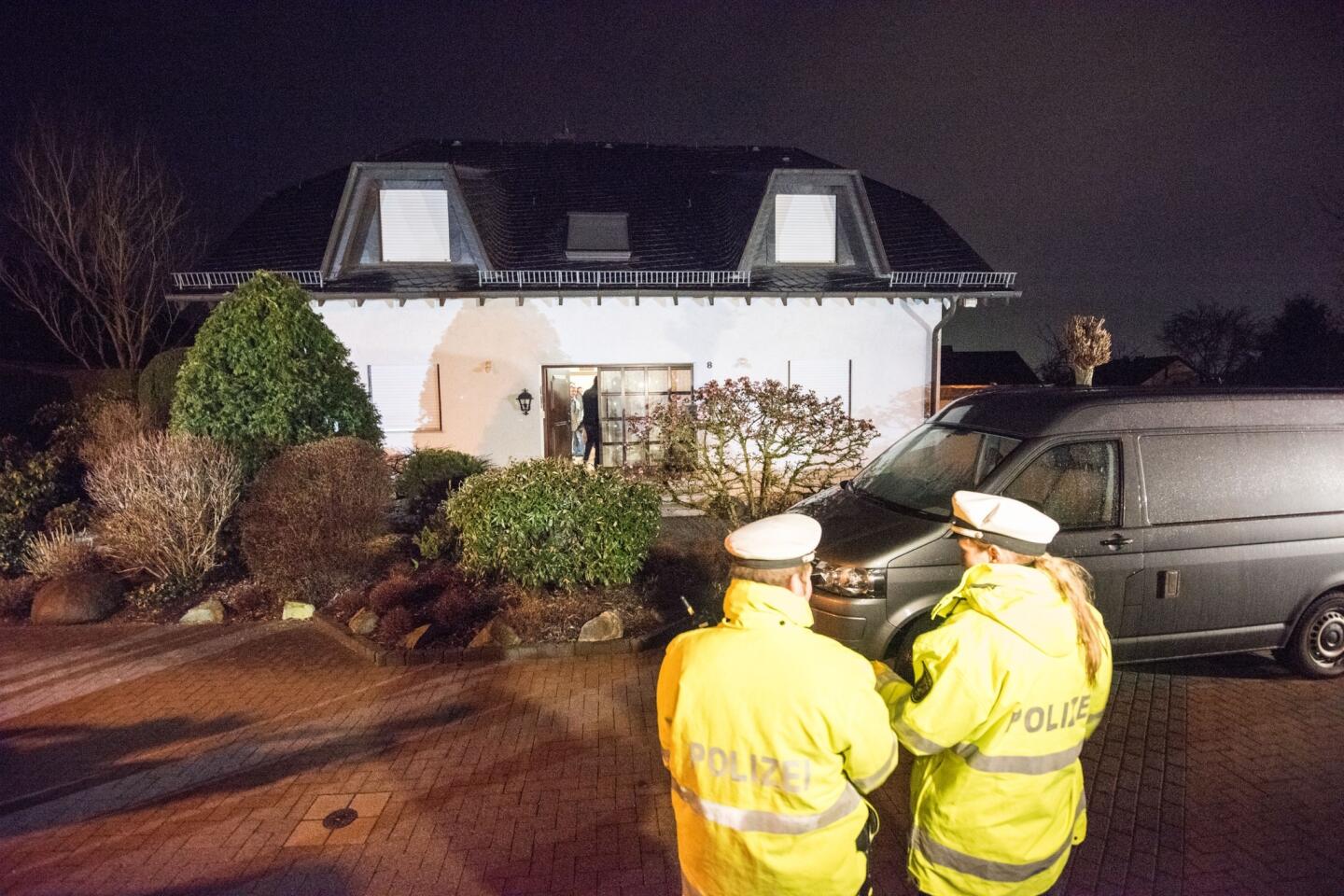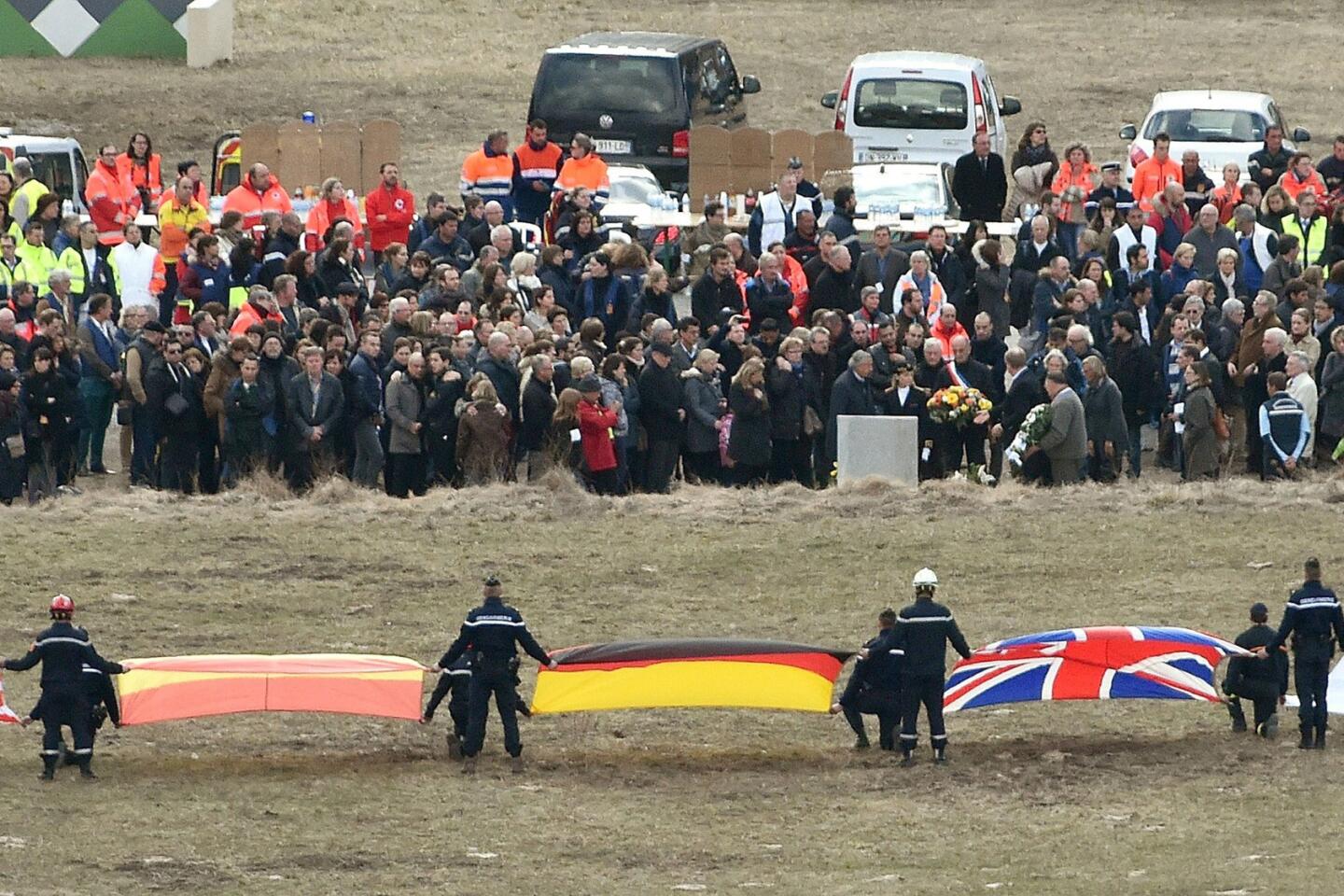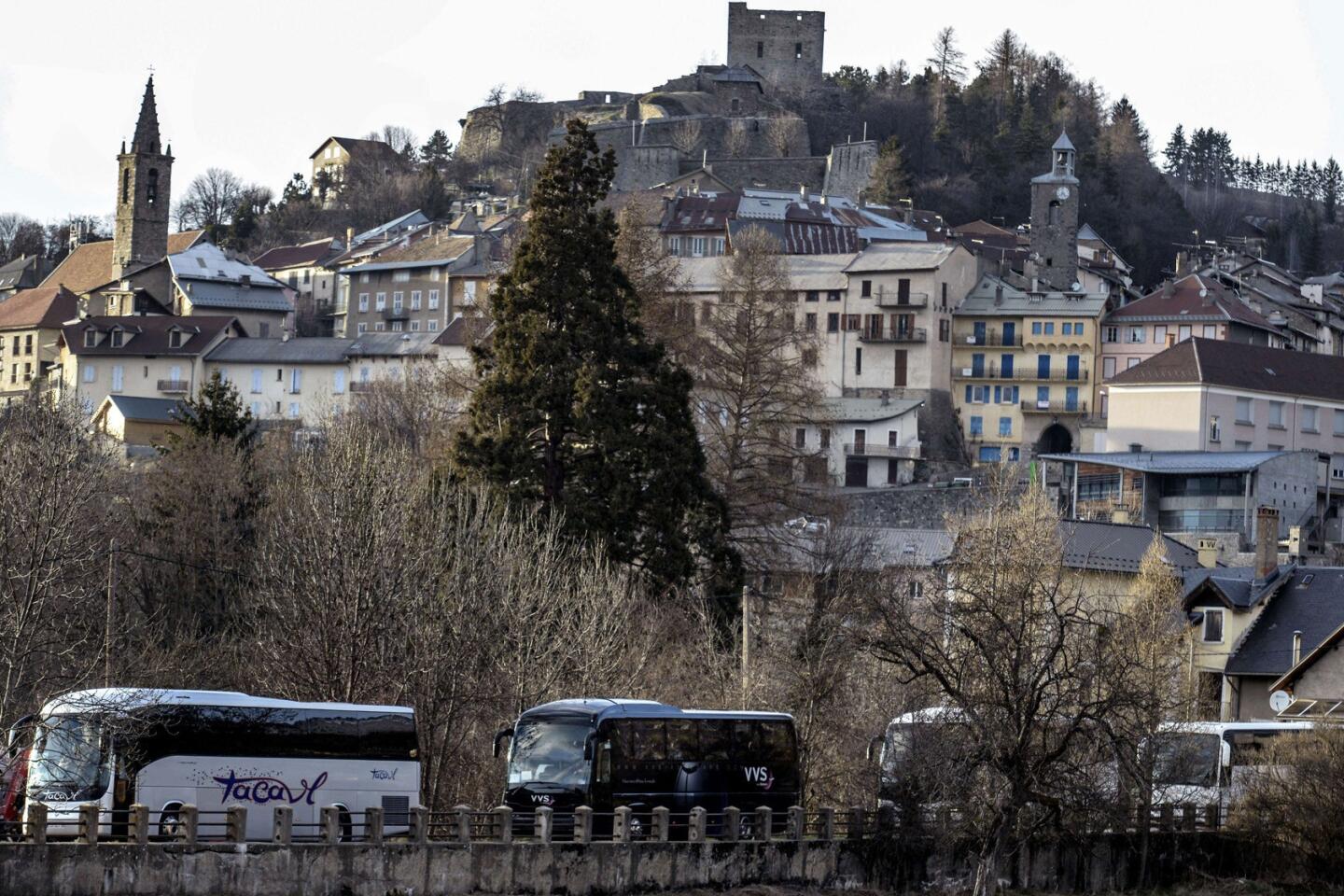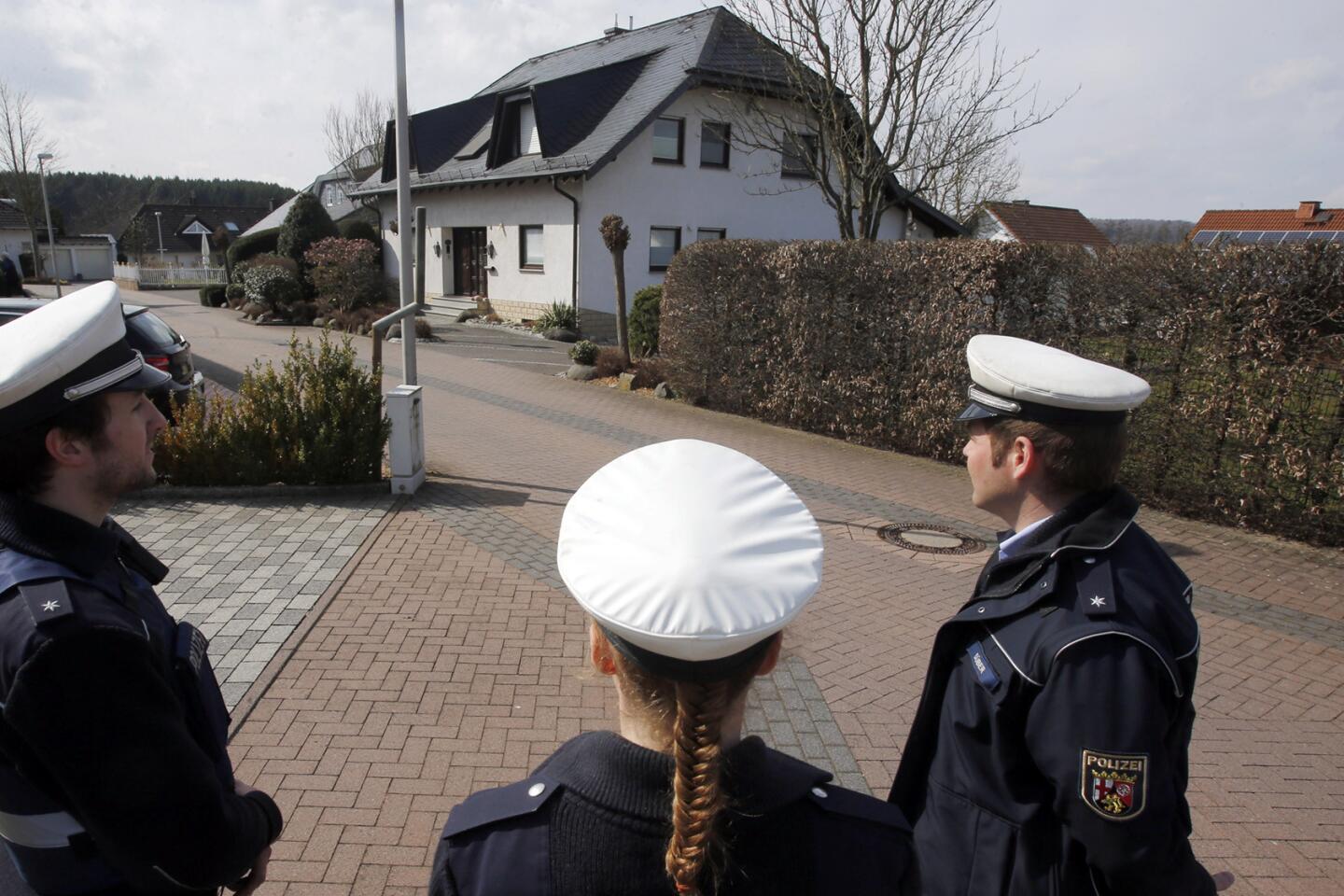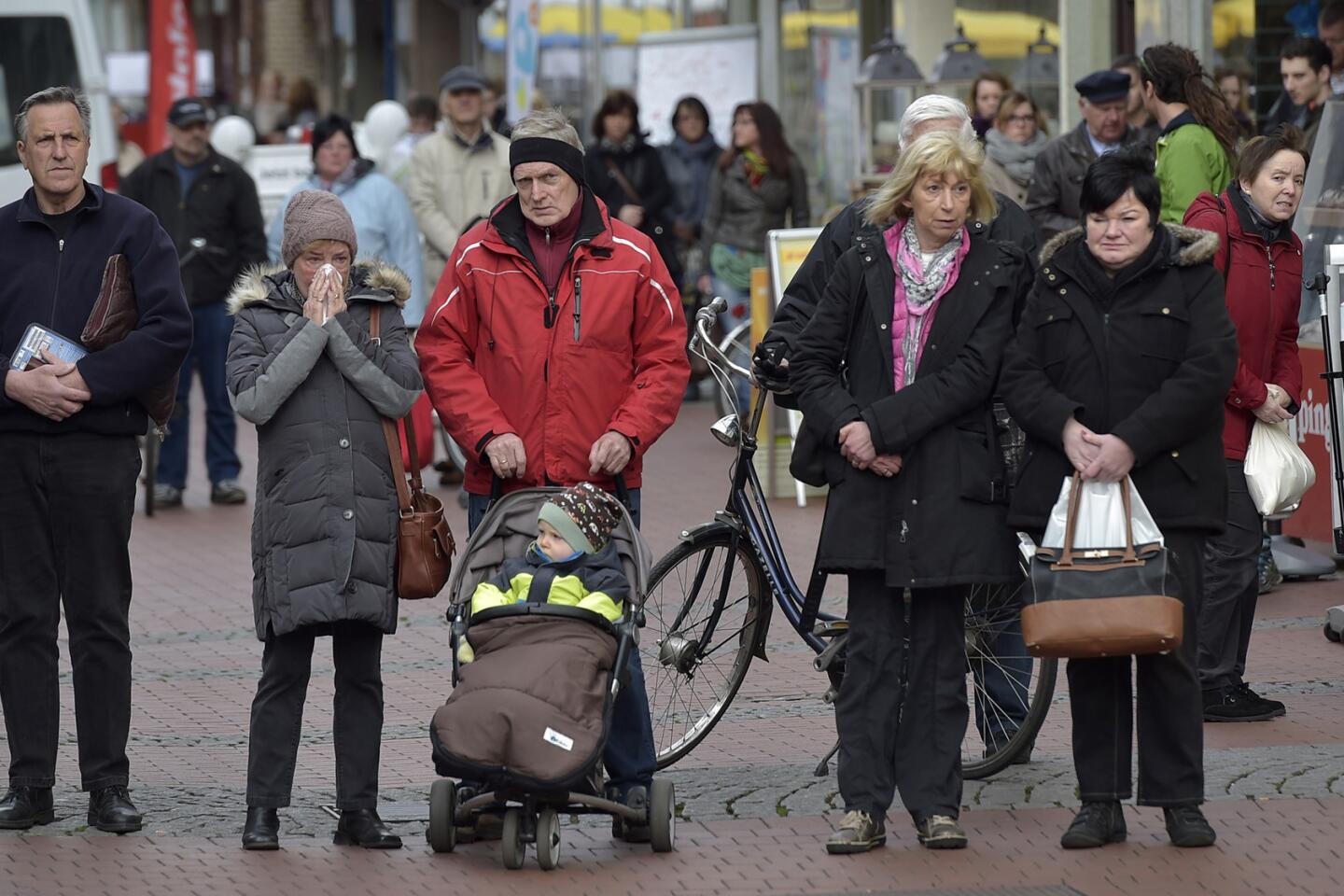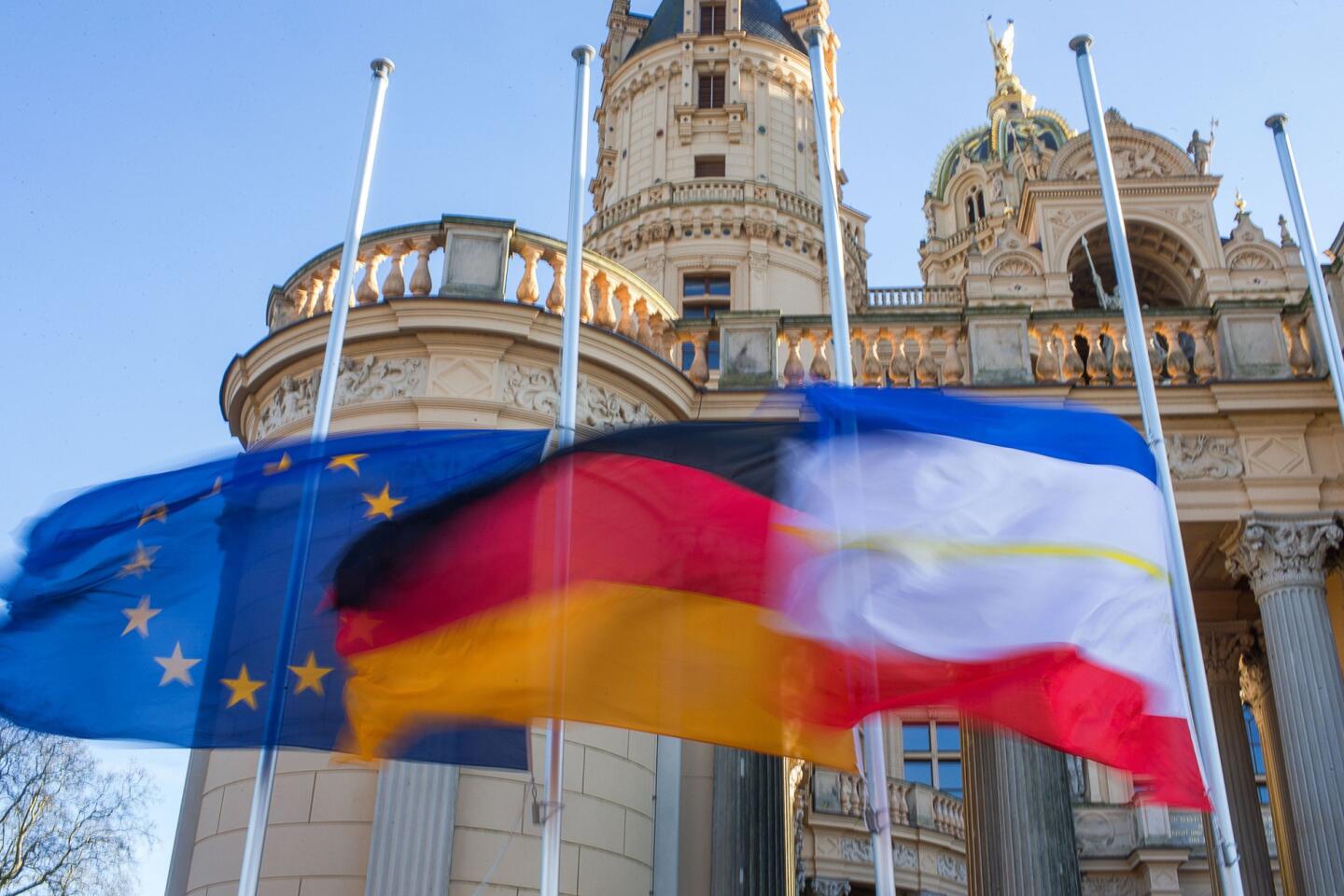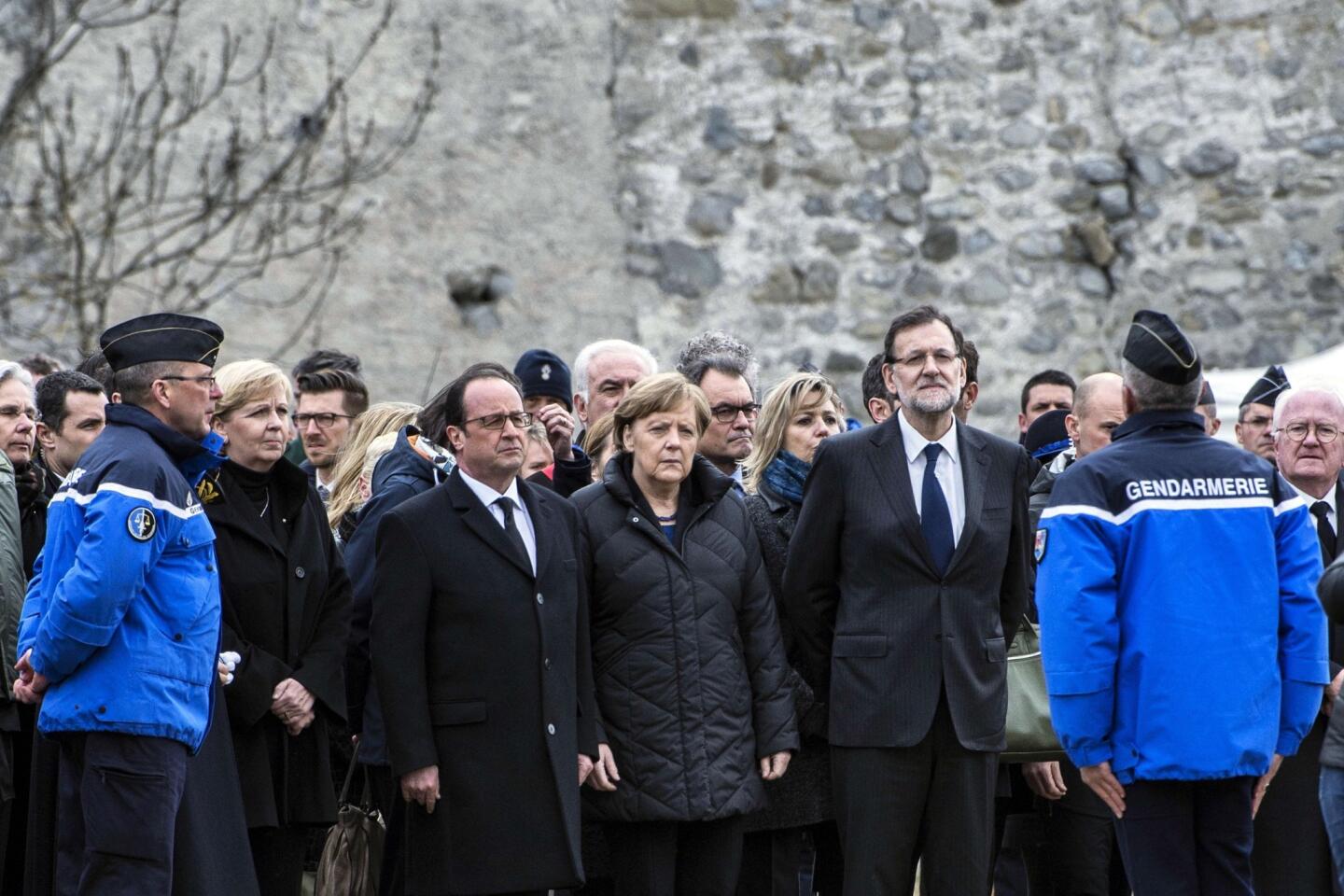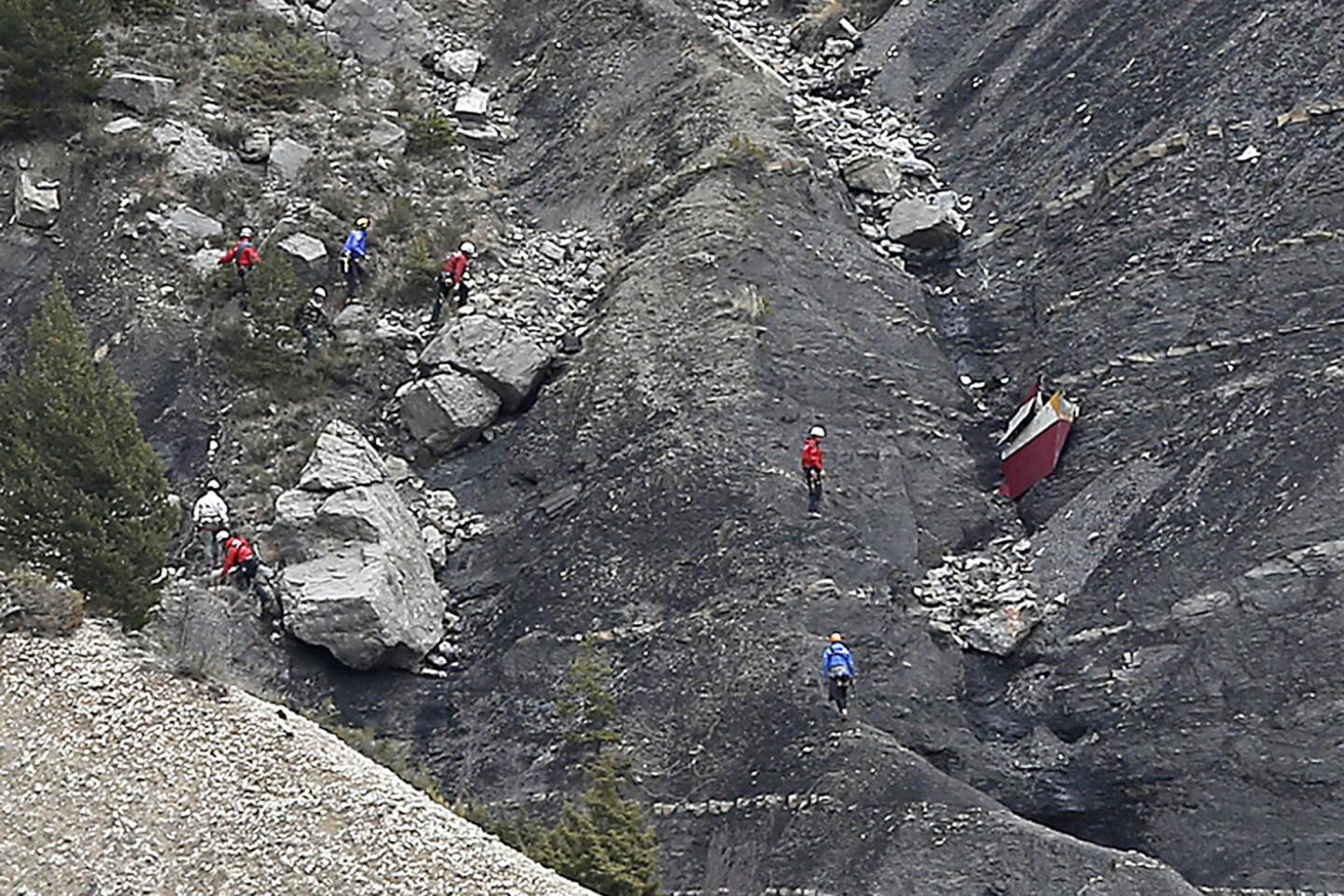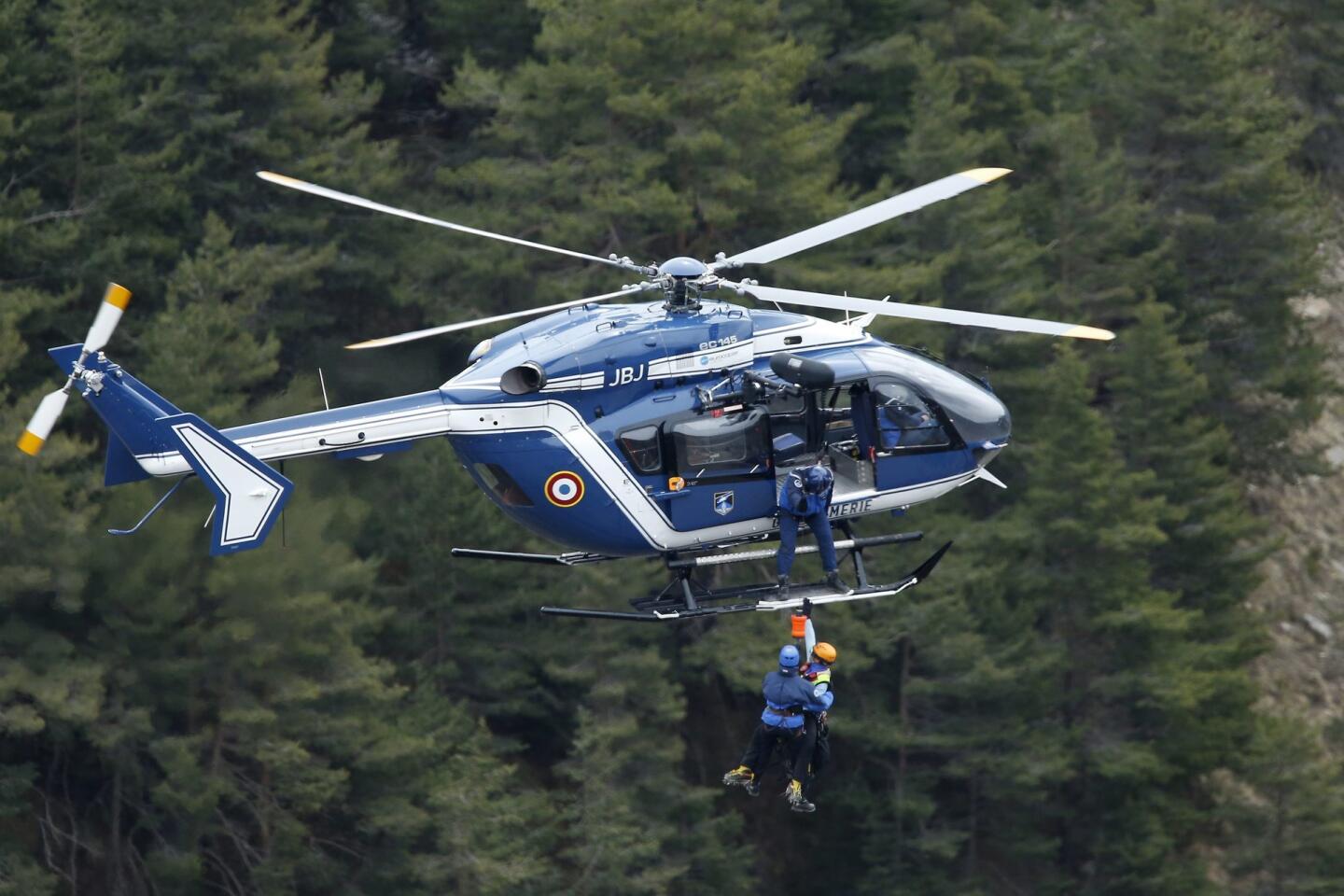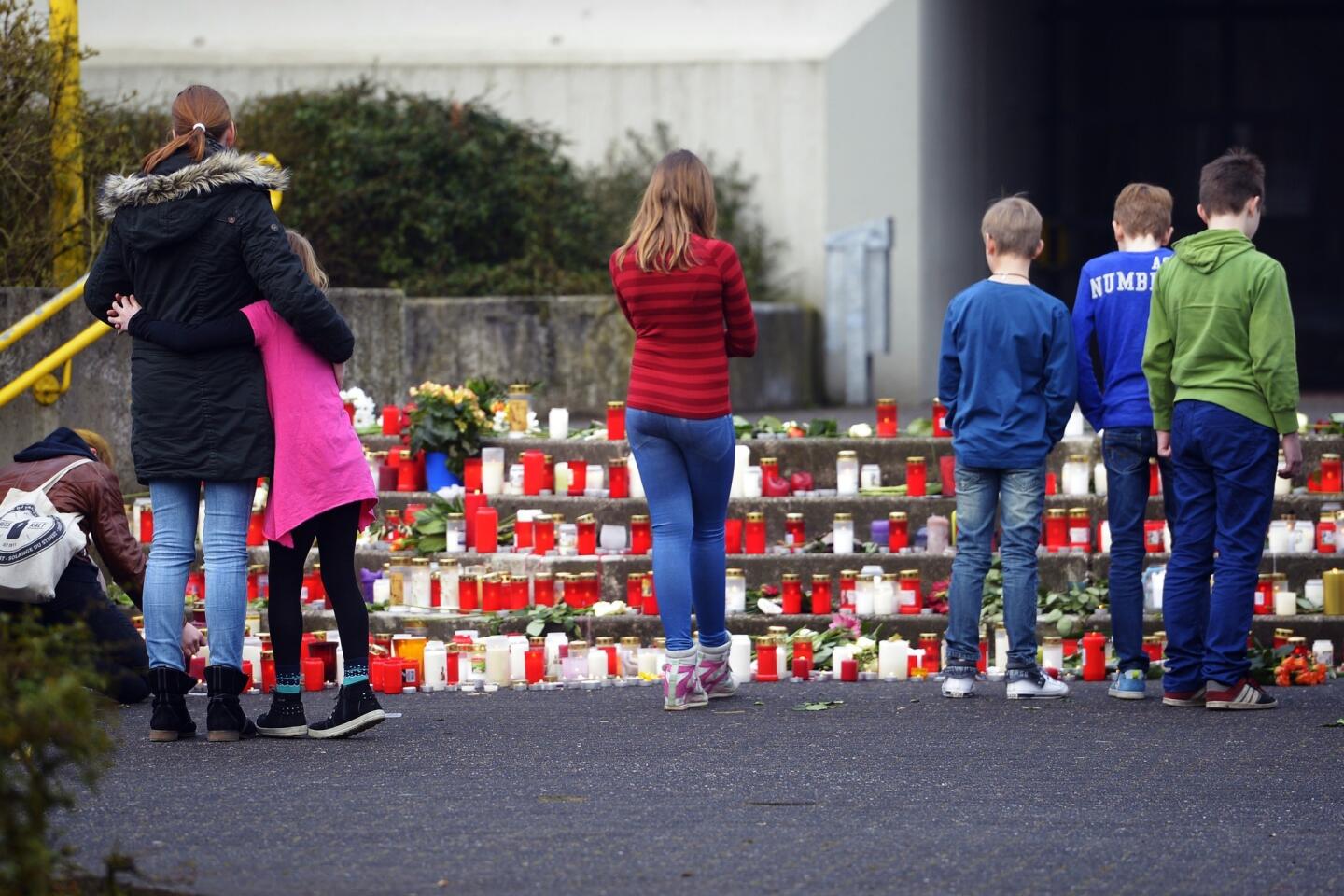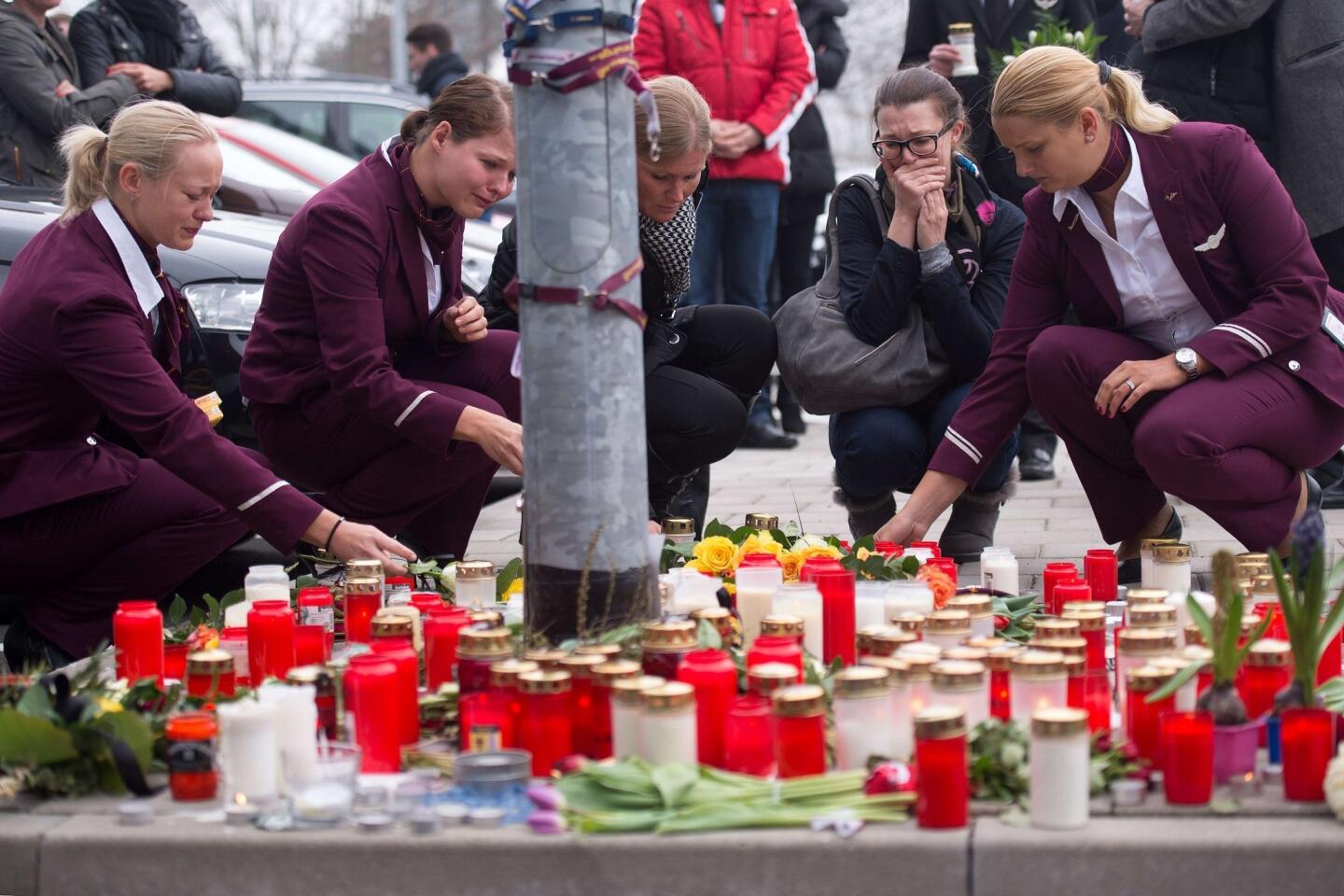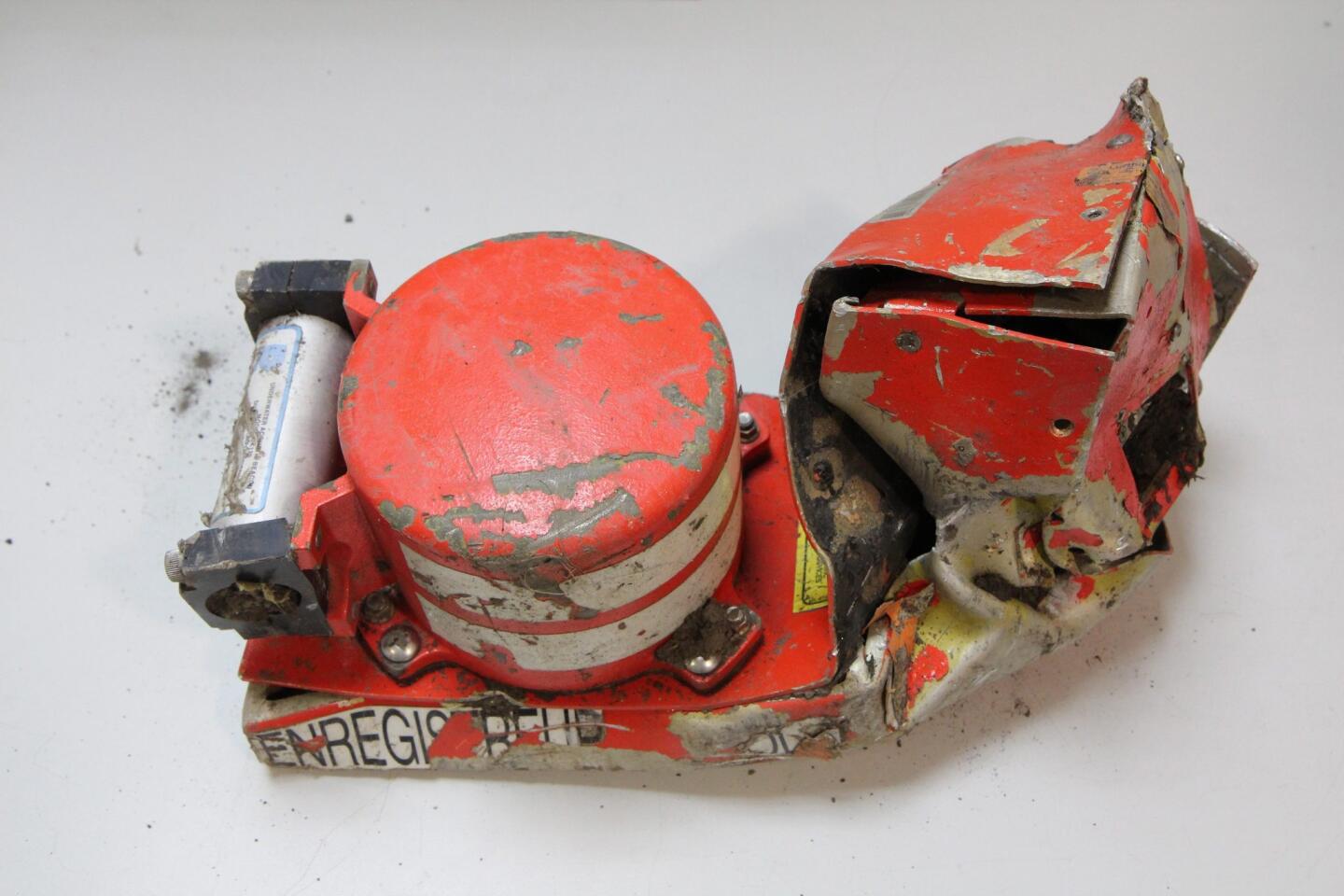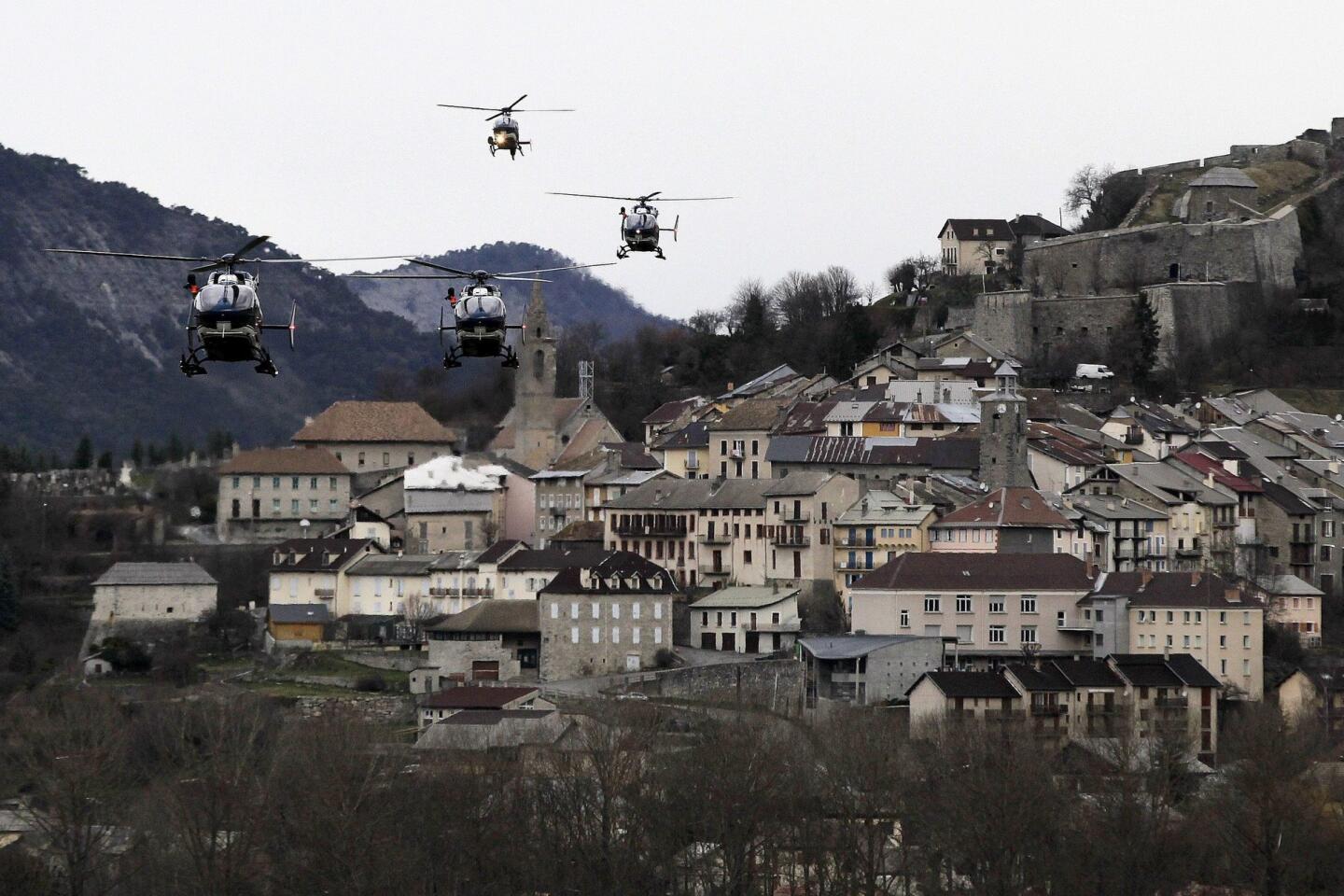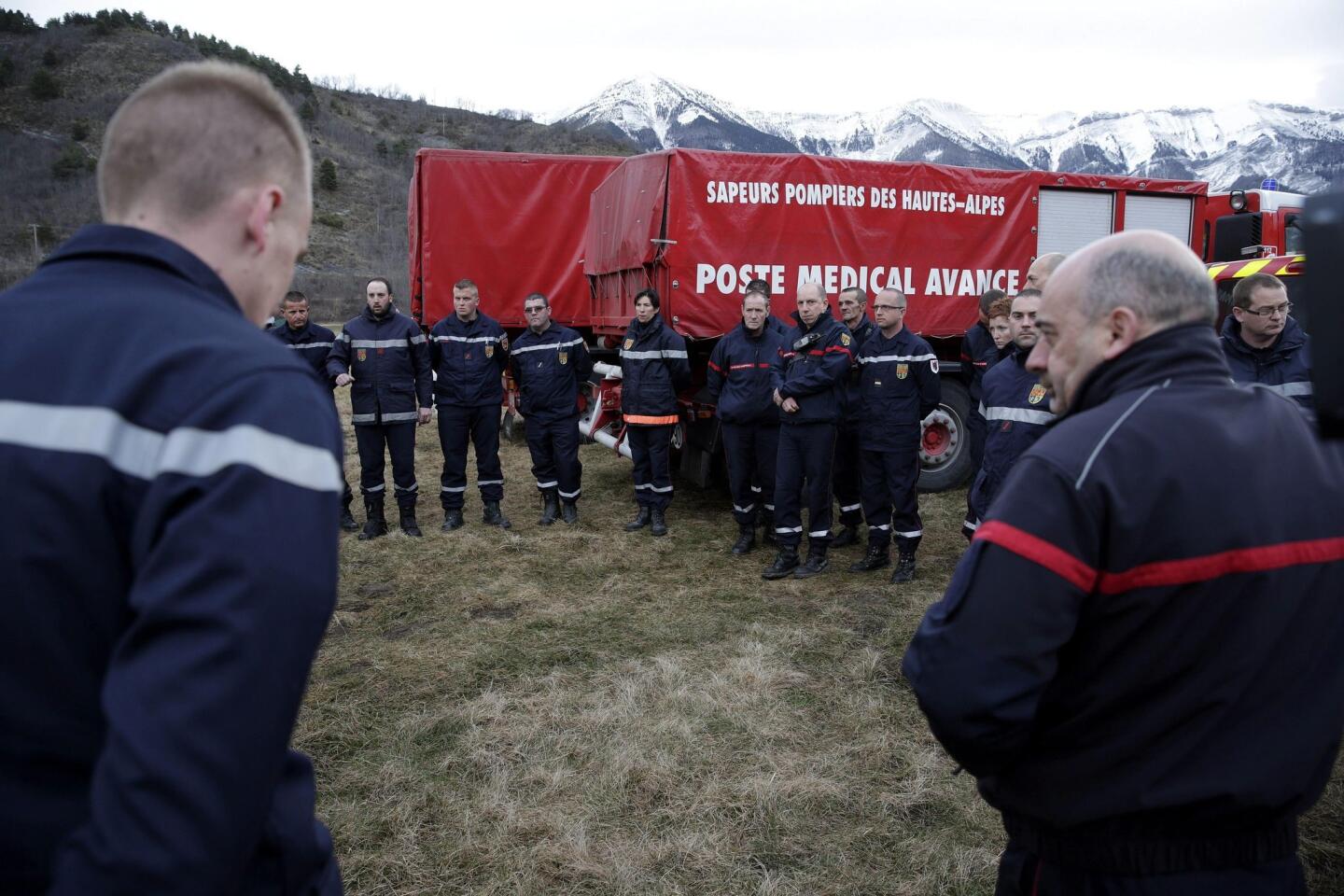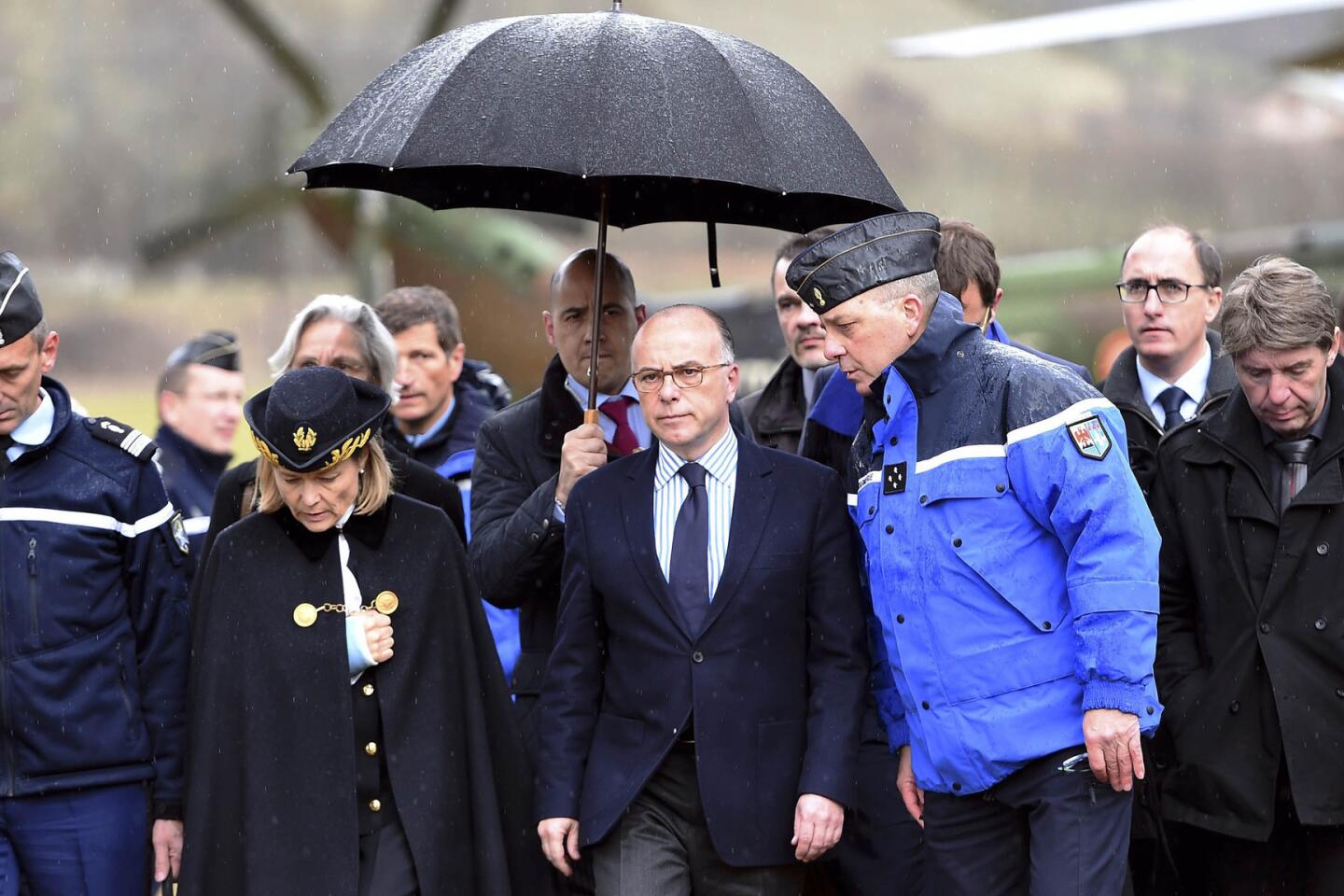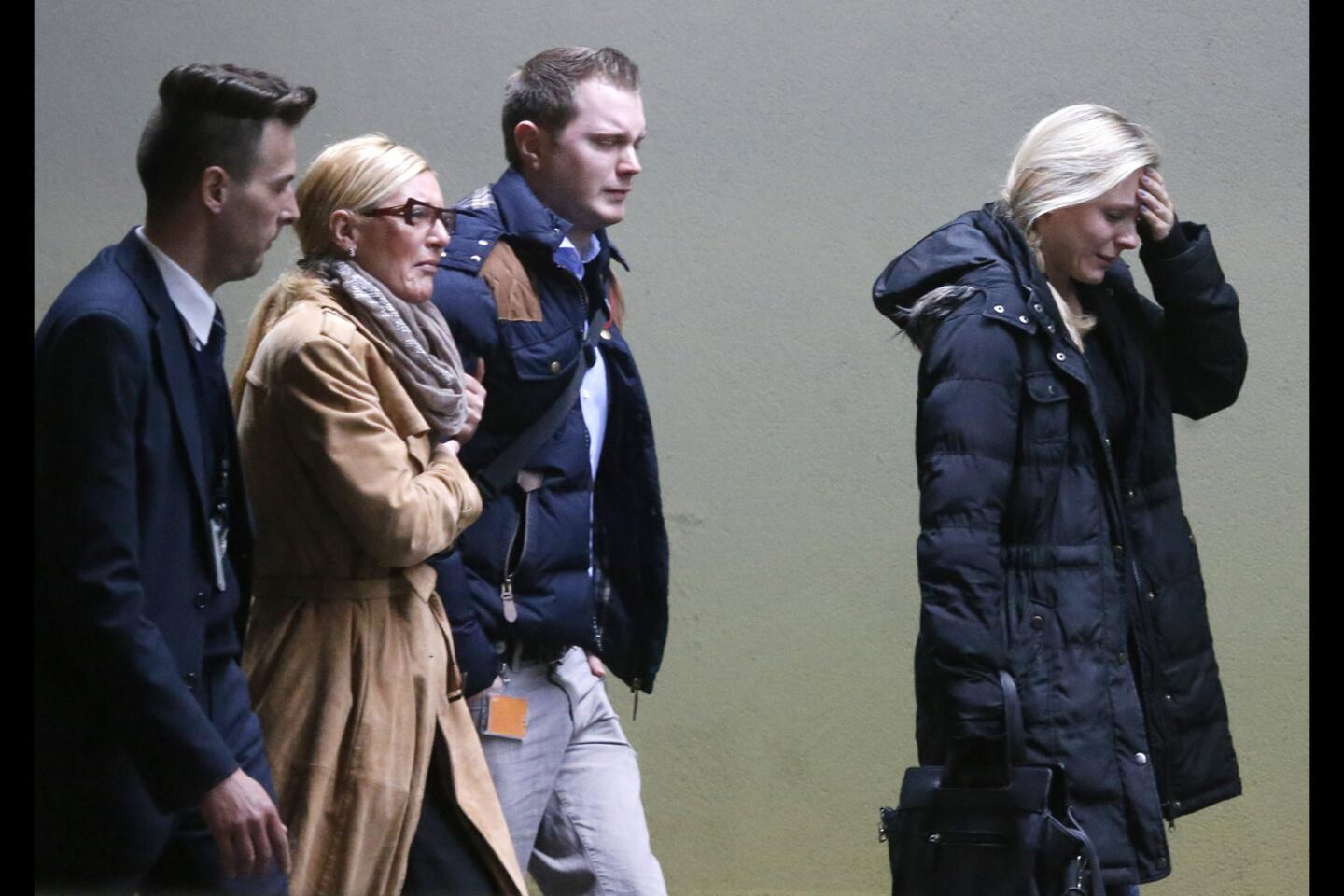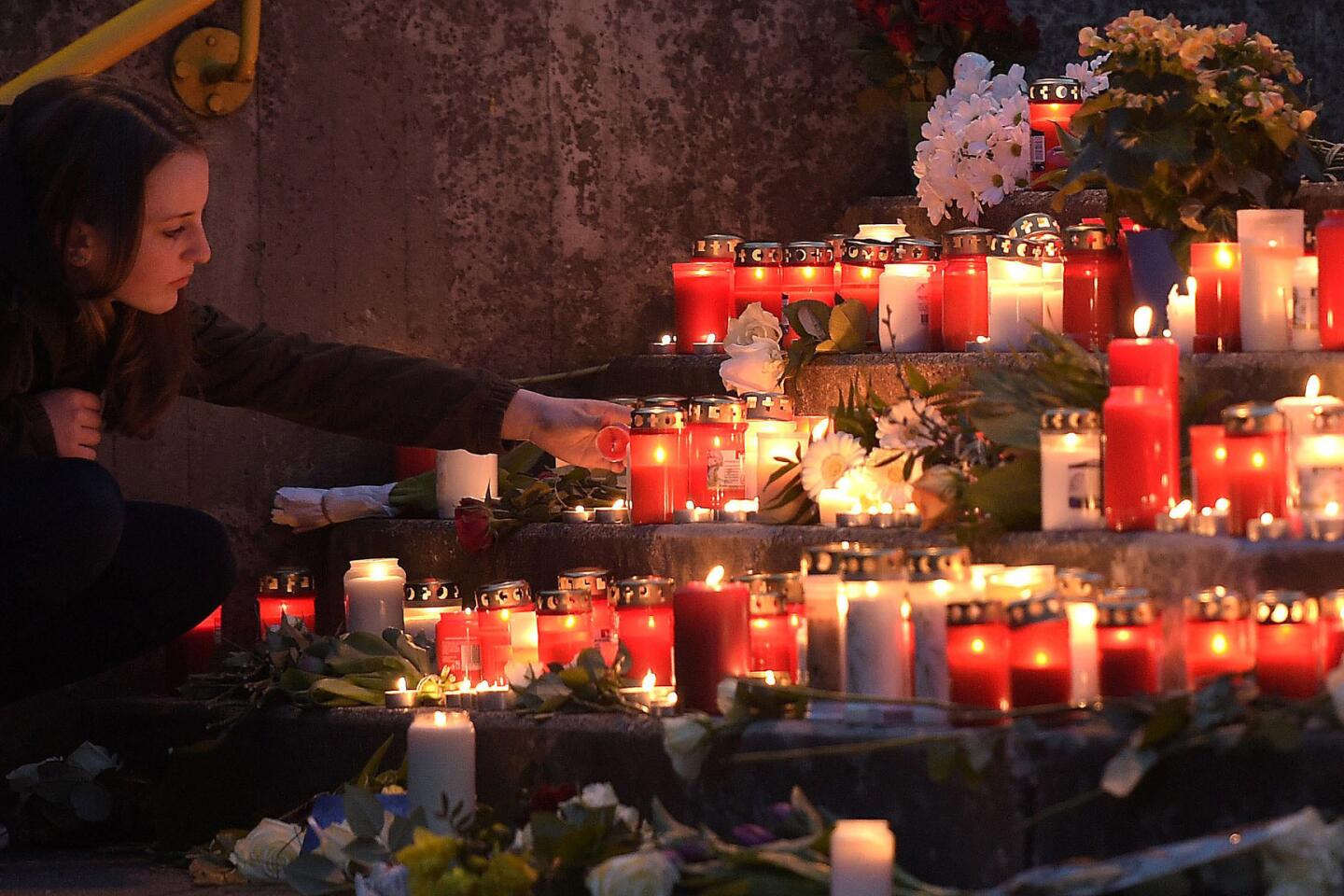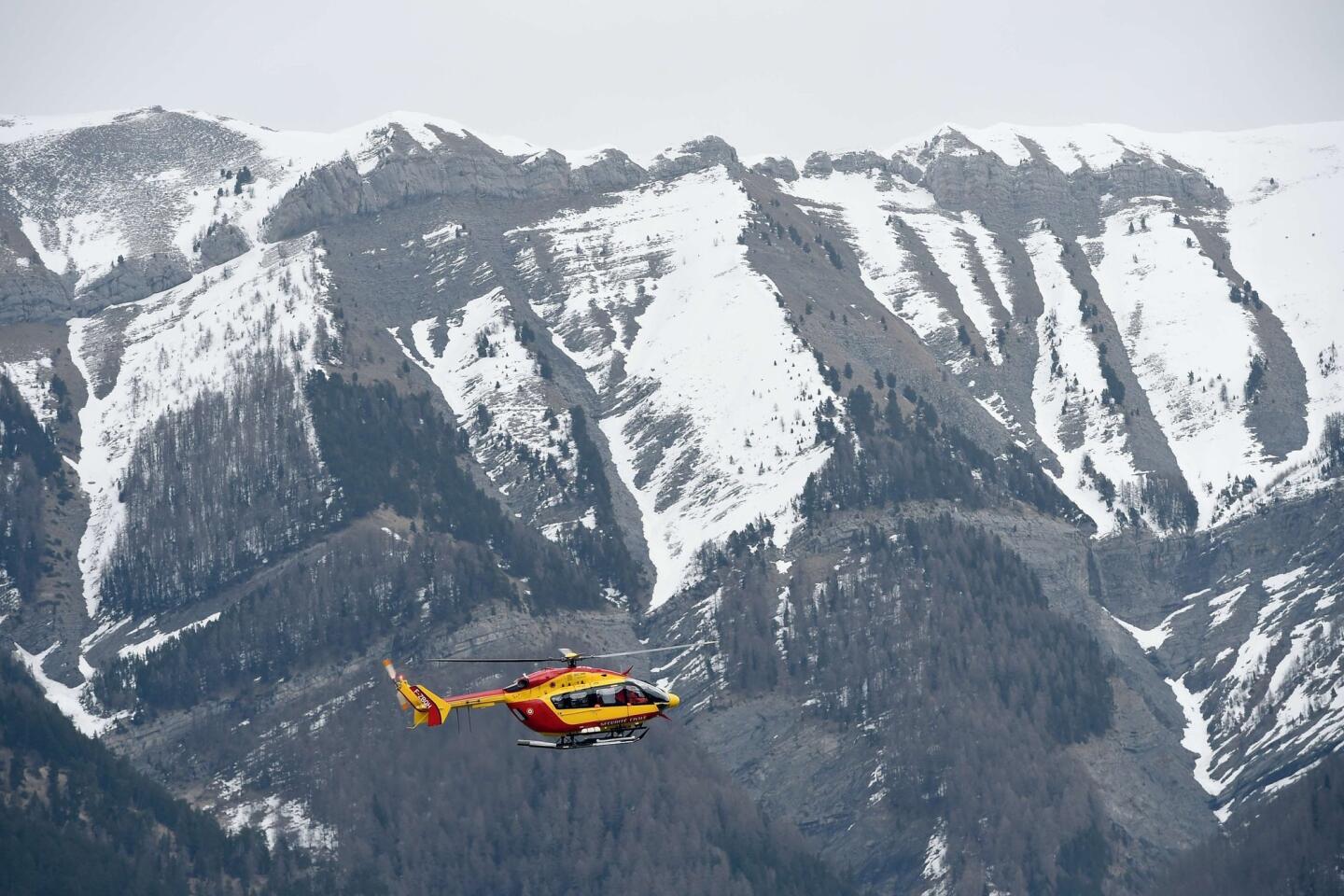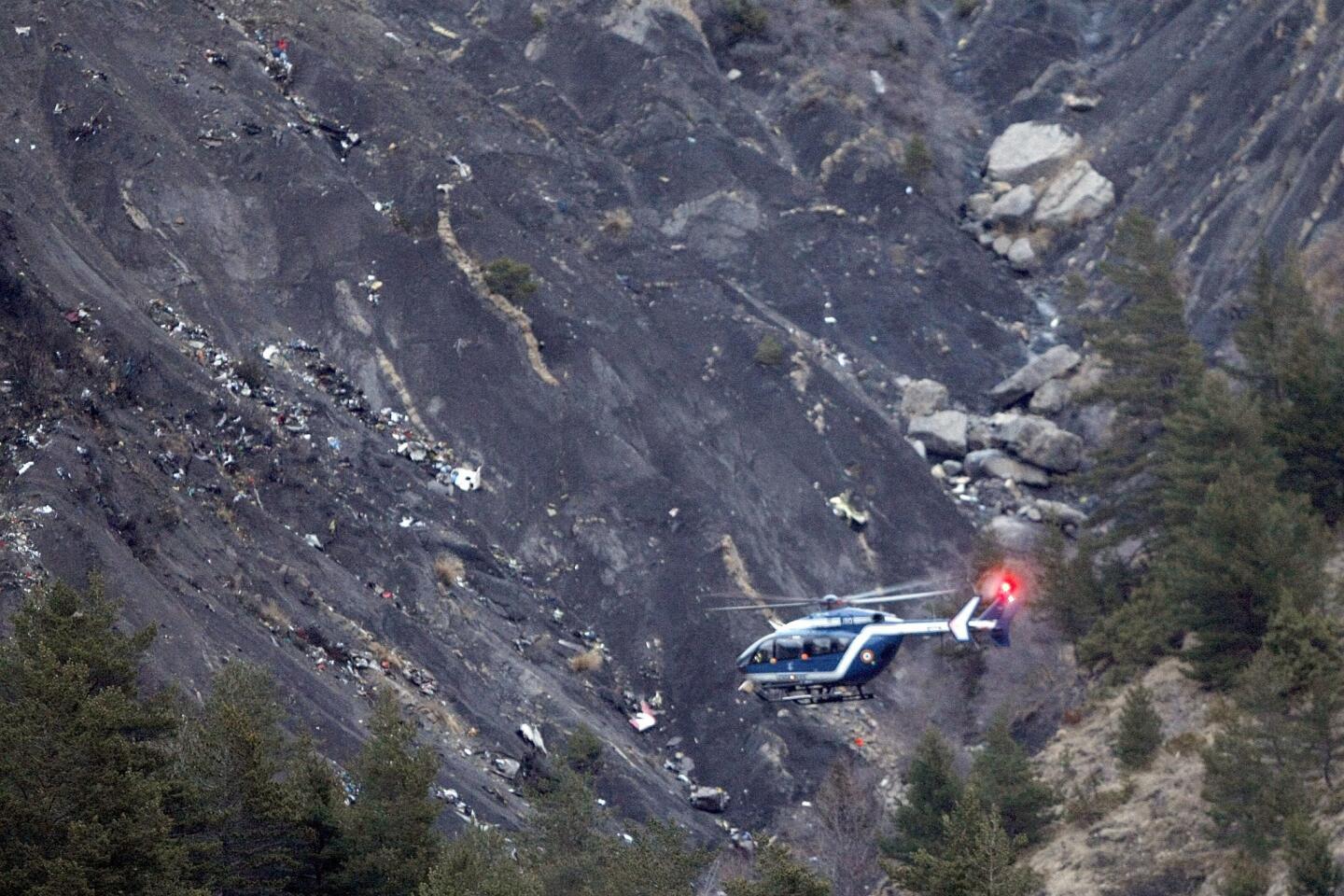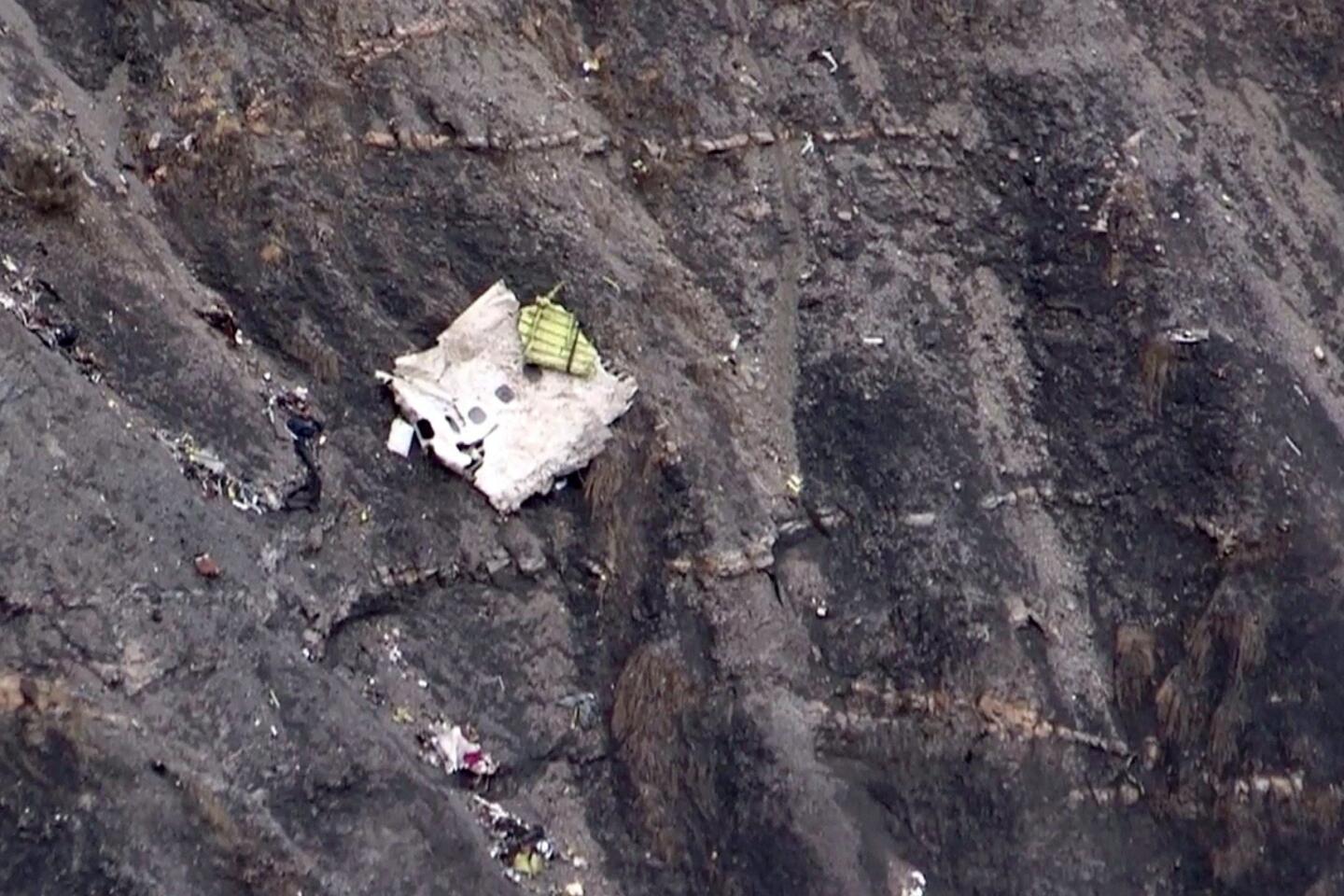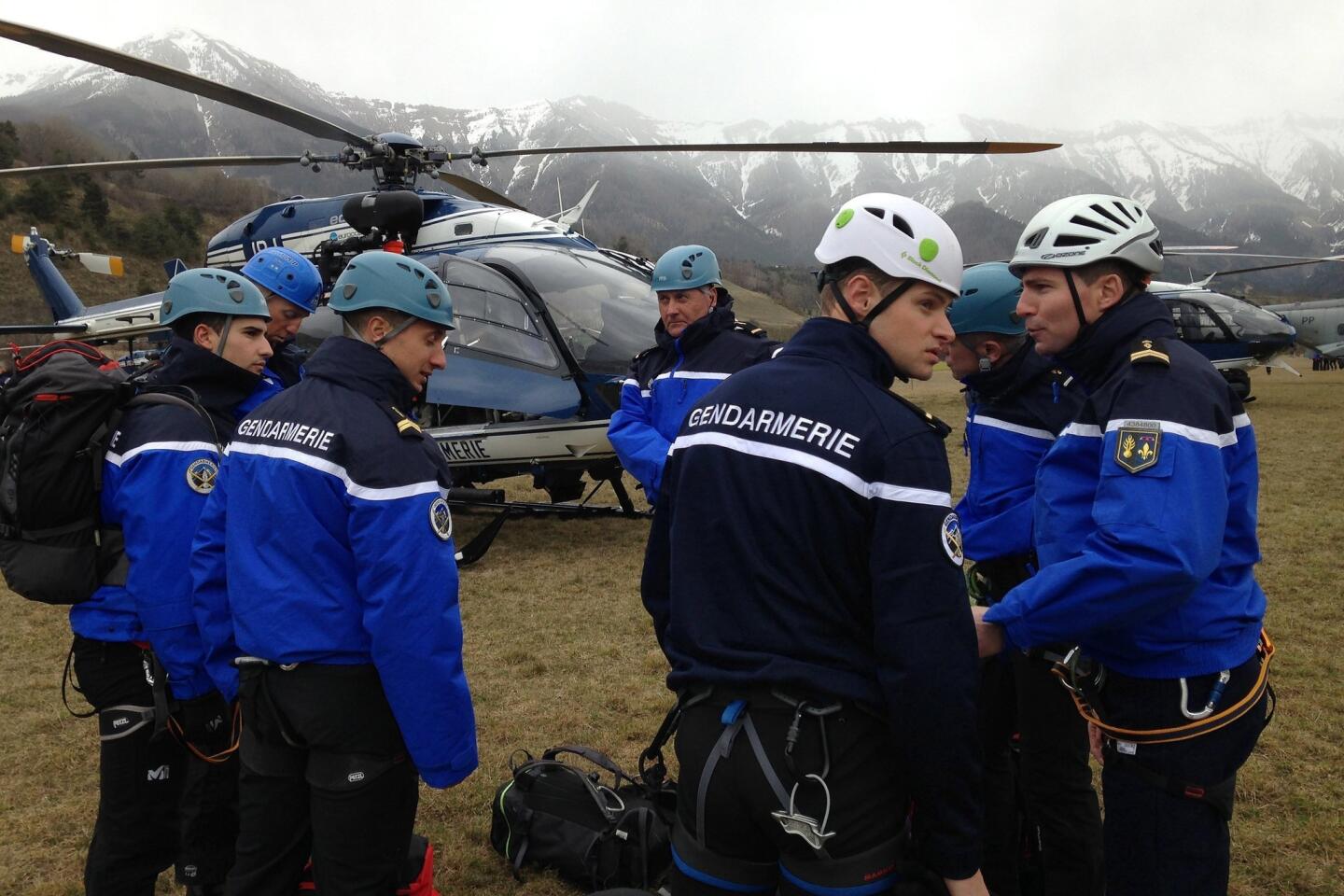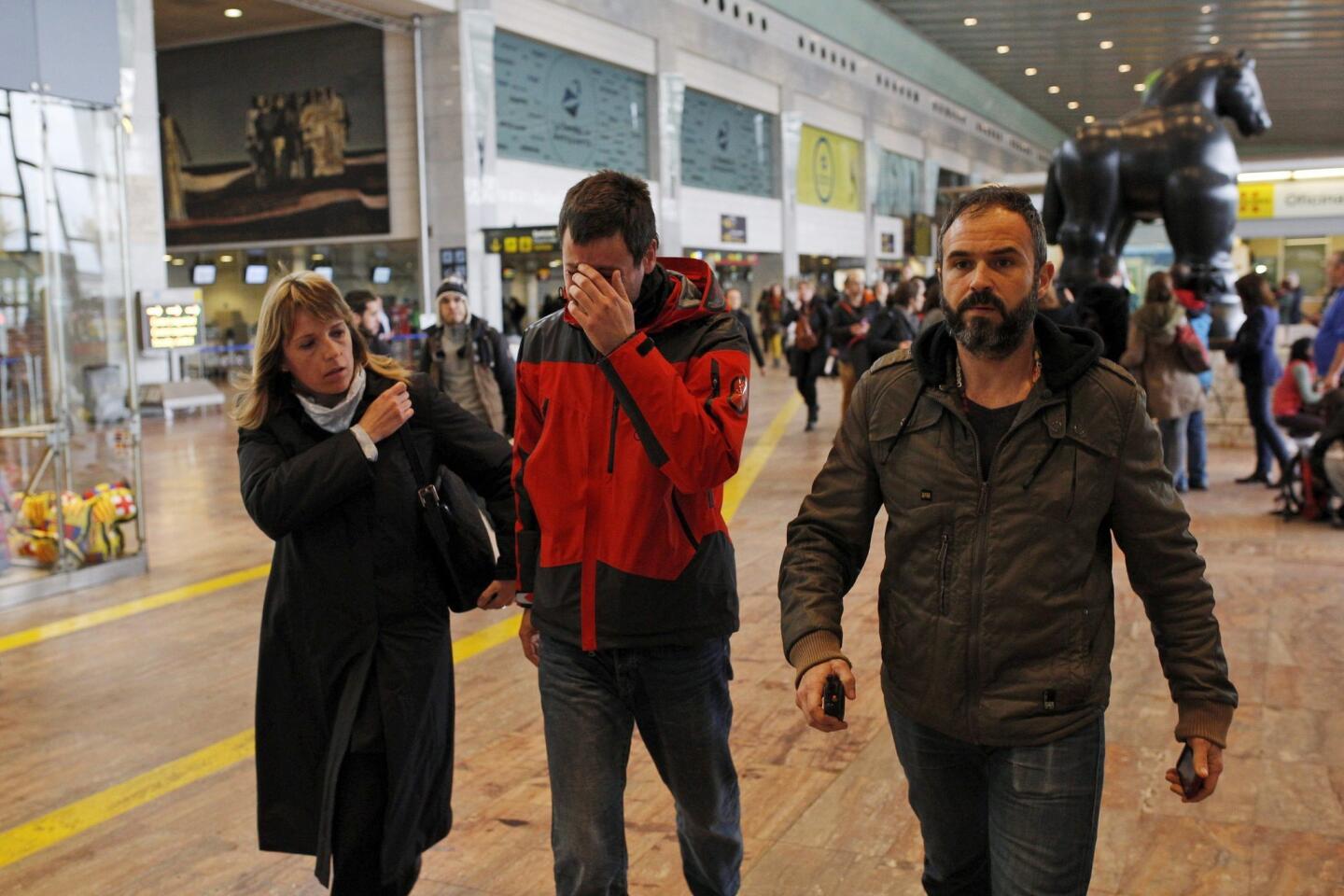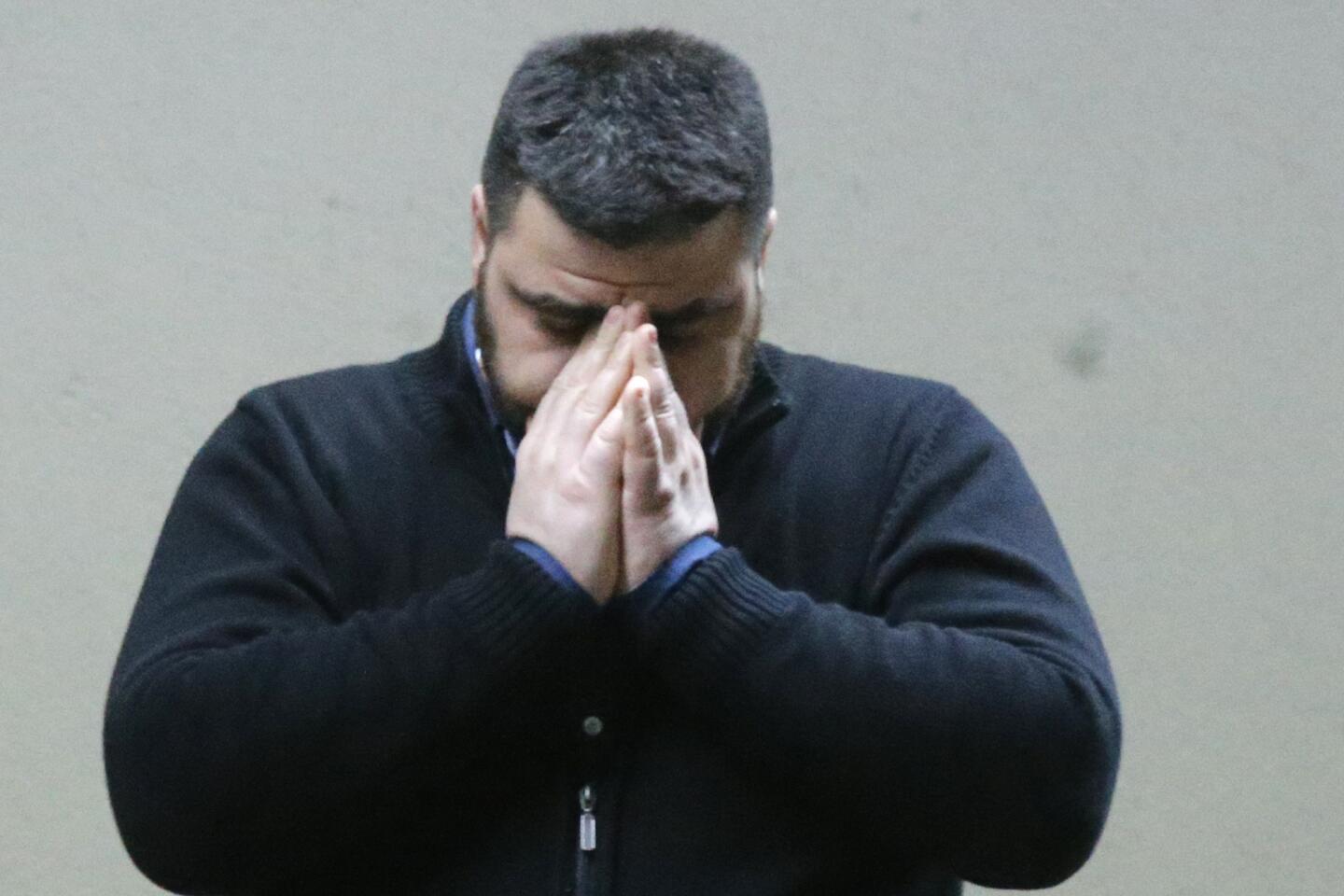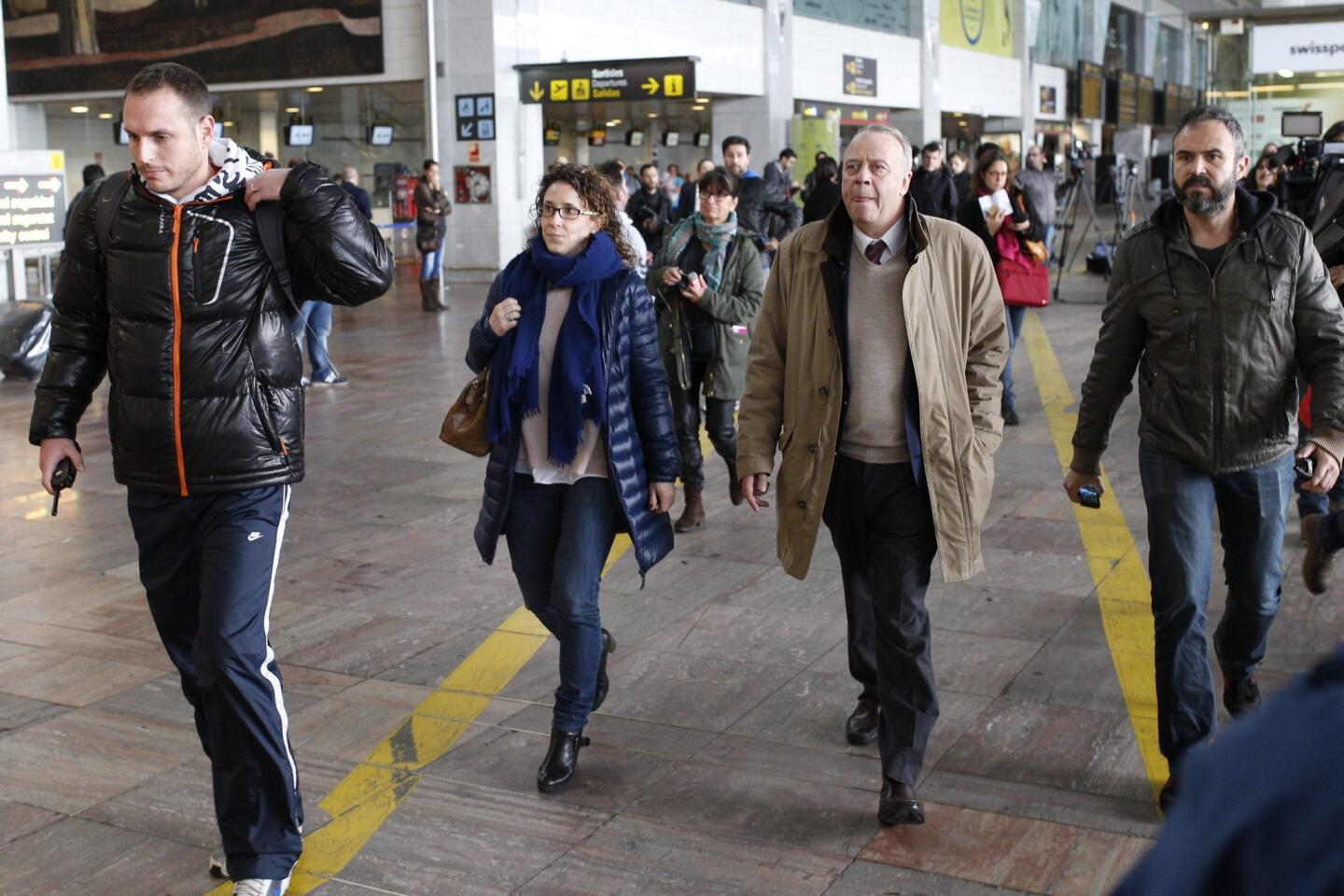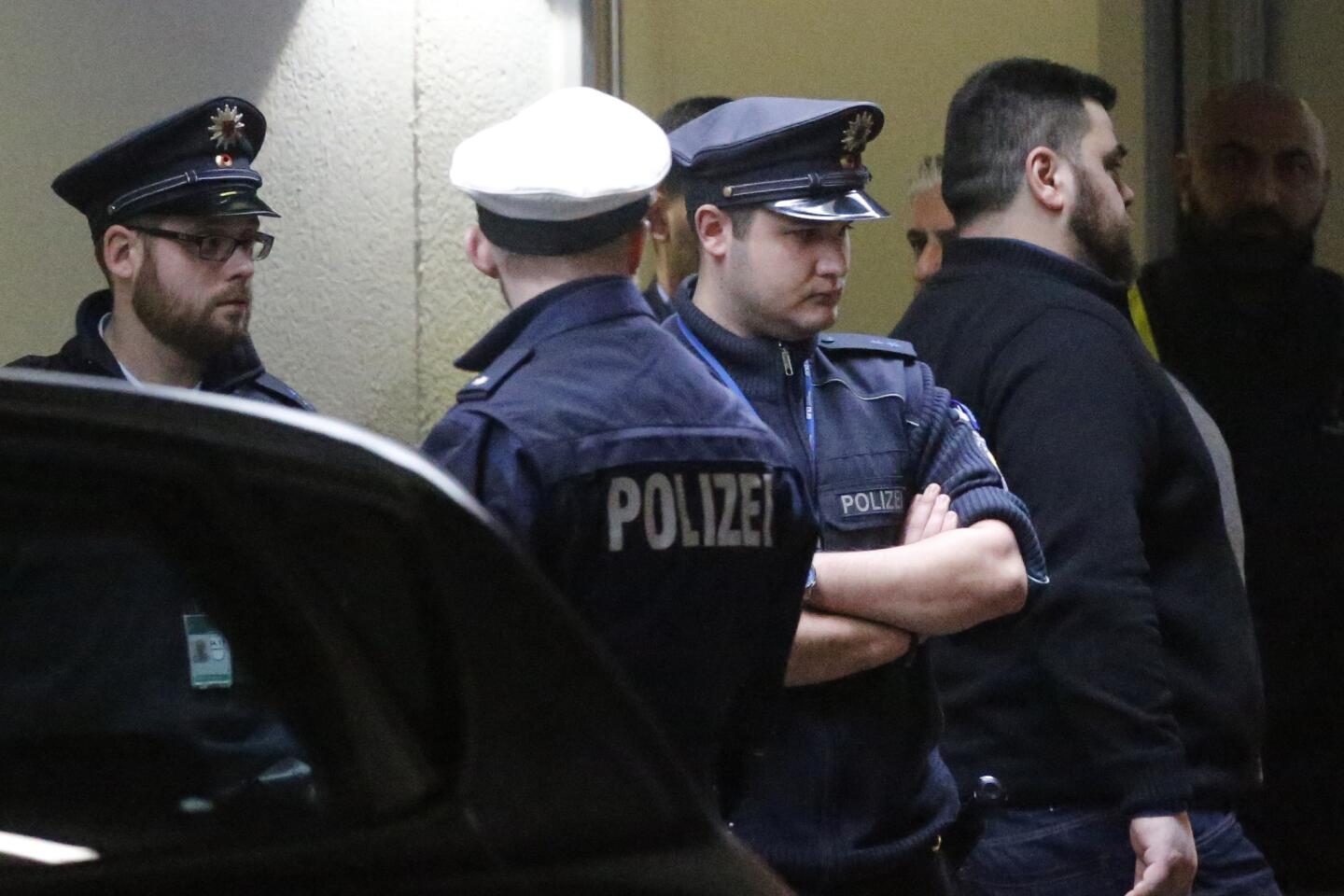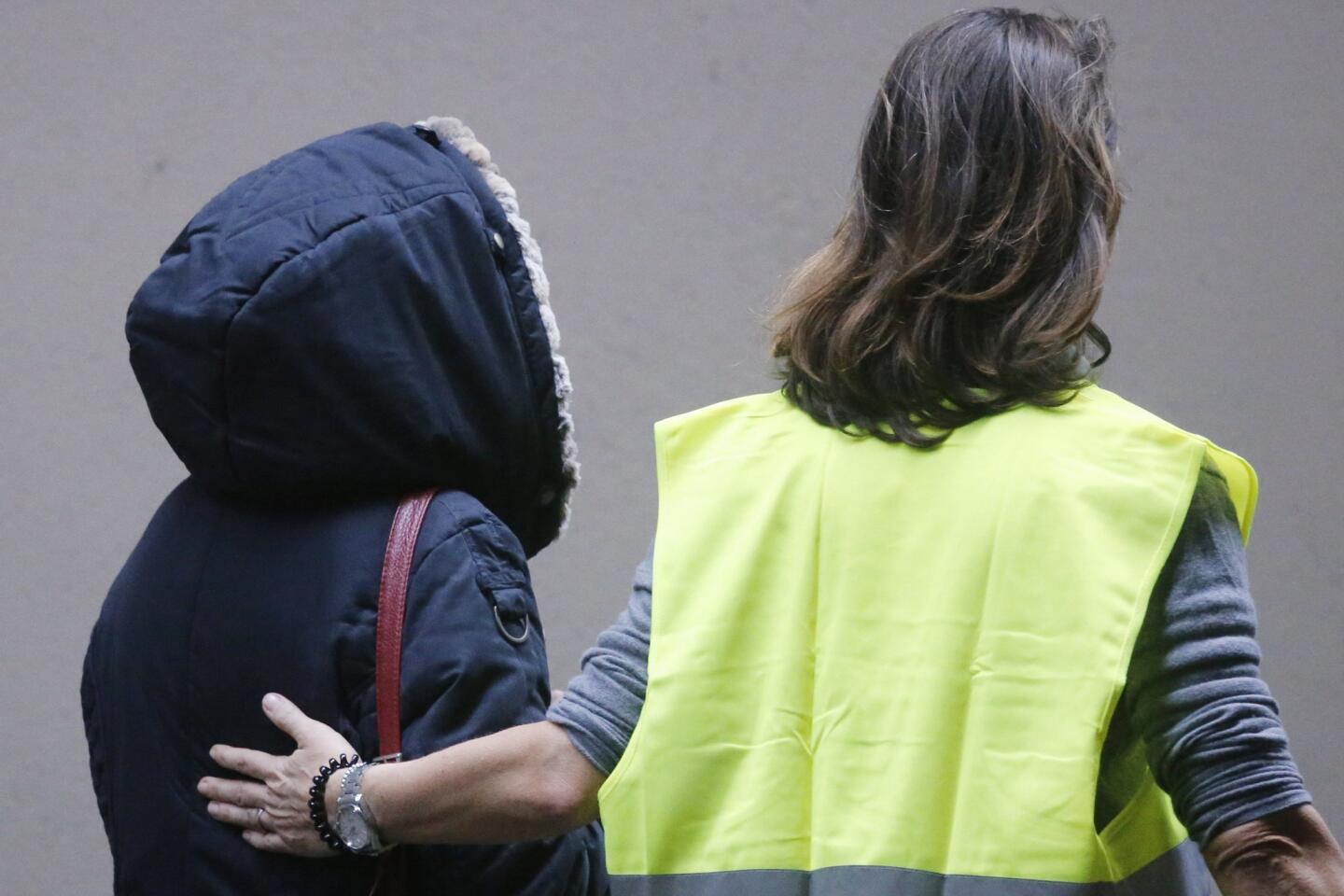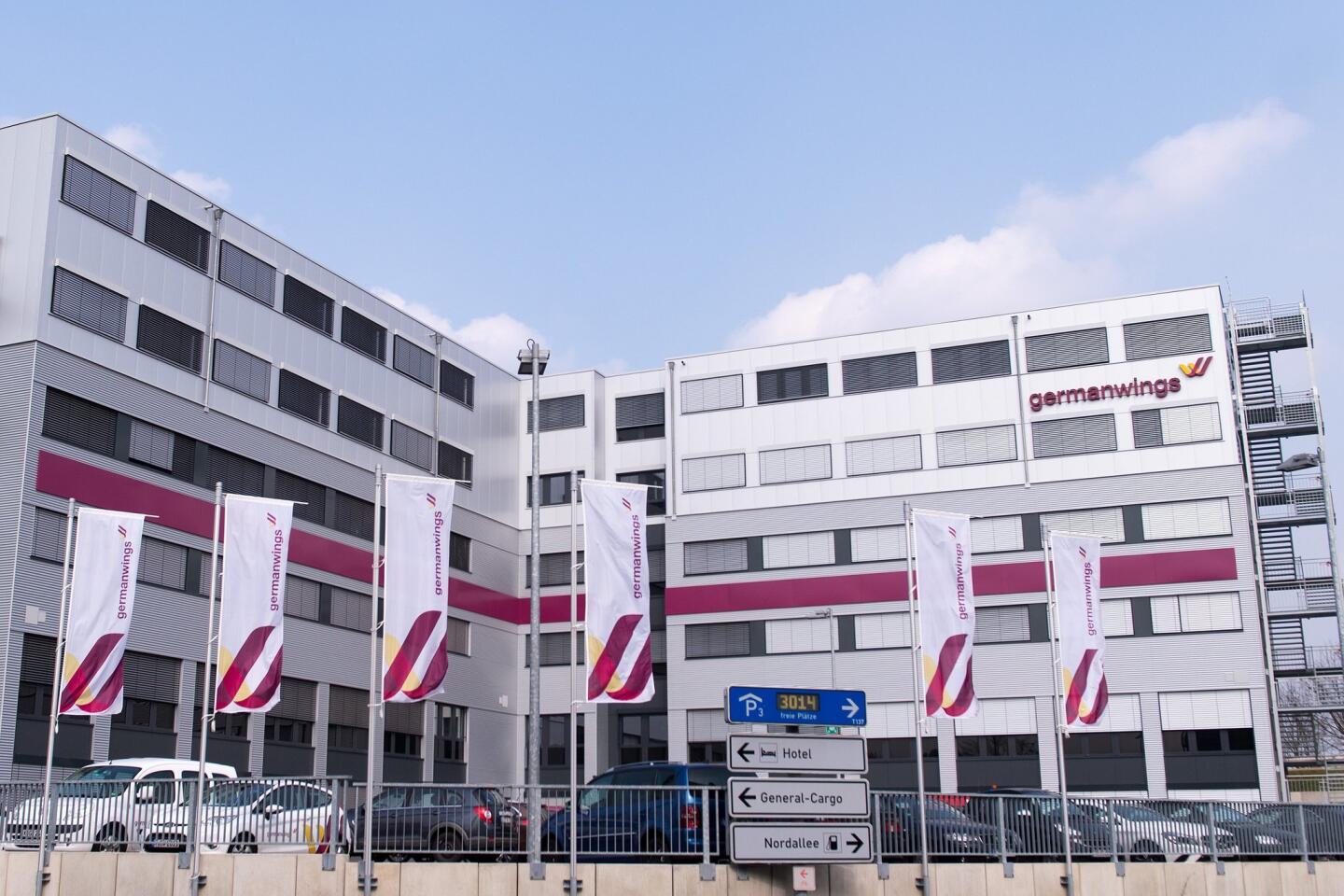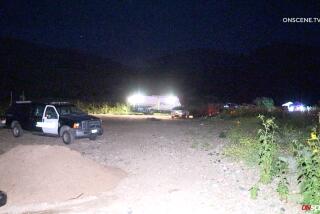Germanwings 9525 crew did not issue distress signal before crash in Alps
The flight, an easy hop across Western Europe, shook off the morning drizzle in Barcelona, Spain, and rose through the clouds. Soon, it was cruising at 38,000 feet over southern France, headed over the Alps and an eventual landing in Duesseldorf, Germany.
And then, without explanation, it began a sharp descent.
The aviation world was facing a new mystery Tuesday after the German airliner carrying 150 people crashed into a rugged area of the French Alps, apparently killing everyone aboard.
The plane had issued no distress signal, and neither the airline nor French air safety officials could explain what had happened. However, one of the jet’s flight recorders was recovered, leading authorities to predict that they might soon understand the cause of the crash.
“The ‘black box’ was found a few hours after the crash and will allow the investigation to move forward rapidly,” French Interior Minister Bernard Cazeneuve told journalists. The recorder was flown to Paris and was expected to be examined Wednesday morning.
Germanwings Flight 9525 was carrying 144 passengers and six crew members when it began its steep descent and eventually disappeared from radar, airline officials said. French search-and-rescue teams aboard a helicopter quickly found the wreckage in the southern Alps, between the villages of Digne-les-Bains and Barcelonnette.
Germanwings is a budget subsidiary of Lufthansa, Germany’s national carrier.
In the vacuum of any ready explanation for the crash, speculation was natural, but officials in Germany and the United States sought to tamp down any suggestion that the plane might have been a terrorist target.
“There is no indication of a nexus to terrorism at this time,” said Bernadette Meehan, a U.S. National Security Council spokeswoman.
“There should be no speculation on the cause of the crash,” German Chancellor Angela Merkel told reporters at a briefing in Berlin. “All that will be investigated thoroughly.”
Germanwings Chief Executive Thomas Winkelmann said at a news conference that 67 Germans were among the dead. He called it “a very sad and tragic day for Germany and all the Lufthansa family.”
He didn’t identify other nationalities, but the Associated Press reported that they included numerous Spaniards, two Australians and one person each from the Netherlands, Turkey and Denmark. Two babies were among those aboard.
Mayor Bodo Kimpel of the northern German town of Haltern am See said 16 high school students from his town were on the flight, along with two teachers. The group was returning from an exchange program in Spain.
Winkelmann said the plane, an A320 built by European manufacturer Airbus, left Barcelona at 10:01 a.m., reached its cruising altitude of 38,000 feet at 10:35 a.m., then stalled a short time later and began to lose altitude. Radar tracked its descent for eight minutes.
“Contact with the aircraft with French radar was lost at 10:53 a.m., at which point the plane was around 6,000 feet,” Winkelmann said. “The plane then crashed.”
The radar tracking service Flightradar24 posted unofficial data that suggested the flight might have reached cruising altitude and crashed a few minutes earlier than Winkelmann said.
The owner of a campground near the crash site, Pierre Polizzi, told the Associated Press that he heard the plane shortly before it crashed.
“I heard a series of loud noises in the air. There are often fighter jets flying over, so I thought it sounded just like that. I looked outside, but I couldn’t see any fighter planes,” he said in a phone interview.
Winkelmann said the airline was trying to determine why there was no distress call. “There was nothing abnormal with the plane,” he said.
Air traffic controllers did issue a “distress phase,” the third and most serious of three alerts used to help identify and coordinate rescue efforts when a plane is thought to be in trouble.
“The aircraft did not itself make a distress call, but it was the combination of the loss of radio contact and the aircraft’s descent that led the [air traffic] controller to implement the distress phase,” a representative of the General Directorate of Civil Aviation said.
In all likelihood, the plane was set on autopilot shortly after takeoff. Possible explanations for what went wrong include a fire in the cockpit that incapacitated the crew, an electrical malfunction, or something more sinister: irrational pilot behavior or coercion by a terrorist who somehow gained entry to the cabin.
But the plane had systems intended to protect against all of those threats.
The Airbus A320, like all modern jets, has multiple radio and communications systems. Aircraft have sophisticated electrical systems that are capable of isolating failures so that backup systems are not affected. The jetliner transmits telemetry data that could have alerted the airline’s maintenance base of a problem.
Aviation experts told French television that the steady drop in altitude suggested that the pilots had struggled to save the plane but eventually lost control. Weather experts said meteorological conditions in the area were calm, with no clouds and very little wind.
Alain Vidalies, the French transportation minister, said the plane crashed in “a very snowy area, inaccessible to vehicles.”
At 8 p.m., as night fell in the Alps, the air search and rescue operation was called off until dawn Wednesday.
Brice Robin, the public prosecutor at Marseilles under whose jurisdiction the crash site falls and who is in charge of any criminal inquiry, said the Airbus had hit the mountain at an altitude of about 5,000 feet.
“It’s too early to establish the cause of this accident,” Robin said. “Right now, air investigators are working with the gendarmes and are interviewing witnesses to have a better idea about what might have happened.”
Winkelmann said the Airbus A320, which had undergone a checkup this month in Duesseldorf, was piloted by a captain with more than 10 years of experience with Lufthansa and Germanwings and 6,000 hours of flight time on Airbus aircraft.
The plane was built in 1991 and had accumulated about 58,300 flight hours in about 46,700 flights, Airbus said in a statement.
The A320, a short to medium-range plane, is considered a very safe jet, having the fifth-lowest rate of fatal accidents for an aircraft model with more than 2 million miles, according to Airsafe.com, an aviation safety site launched by a former Boeing analyst.
Until the Germanwings crash Tuesday, Lufthansa had only three fatal accidents since 1970, involving the deaths of 77 passengers and crew members, according to Airsafe. The crash was the first in France since a Concorde plane went down shortly after takeoff from Charles de Gaulle airport in Paris in 2000.
Merkel, the German chancellor, was expected to travel to the crash site Wednesday. Spain declared three days of national mourning, and King Felipe VI, who was on a state visit to France, said he was suspending his trip.
In Washington, U.S. officials said they were in touch with French, German and Spanish authorities and had offered assistance.
Special correspondents Willsher reported from Paris and Hassan from Berlin. Times staff writers Ralph Vartabedian and Hugo Martin in Los Angeles and Christi Parsons in Washington contributed to this report.
More to Read
Start your day right
Sign up for Essential California for news, features and recommendations from the L.A. Times and beyond in your inbox six days a week.
You may occasionally receive promotional content from the Los Angeles Times.


